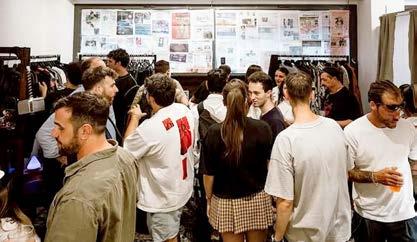






We like to think that there is an invisible yet powerful thread capable, today, of uniting what we call true and authentic Italian fashion. From artisan workshops to major fashion groups, from small independent multibrand stores in the outskirts to the boutiques of big cities that thread is time.
Time as endurance, as a value that lasts synonymous with quality. After years in which fashion has been chasing speed and algorithms, the industry is once again questioning what truly matters: the consistency and durability of materials, combined with the ability to turn a garment into both an experience and a legacy.
These are the same qualities that define our special feature dedicated to outerwear crafted from noble materials, where brands such as Agnona, Aspesi, Kiton, Montecore, MooRER, Piacenza 1733 and Sease tell the story of an Italy that continues to set the standard for international elegance. Outerwear becomes a ground for innovation and rediscovery, driven by the use of fibres such as cashmere, vicuña, merino wool, and alpaca. These are not fleeting trends, but longterm industrial strategies that merge aesthetics, performance, and increasingly, a responsible mindset. The numbers confirm this shift: according to forecasts, the global cashmere apparel market will grow from $3.63 billion in 2025 to $4.86 billion in 2032, with an average annual growth rate of 4.29%. In Italy alone, the sector is worth over $100 million and is expected to exceed $160 million by 2030.
The same values emerge in our cover story dedicated to Puraai, a Padua-based brand born in 2020 from the vision and energy of three young designers determined to express their idea of ethical and contemporary fashion. Puraai embraces innovation through the use of vegan and bio-based materials including corn, apple, and mushroom giving new life to what would otherwise be discarded. The brand embodies a new generation of Italian companies rethinking the very notion of innovation: not only through aesthetics and technology, but through ethics and craftsmanship. It represents a post-luxury mindset a form of luxury that does not flaunt, but communicates.
On the subject of ethics, the fourth edition of the Venice Sustainable Fashion Forum, covered in the following pages, reaffirmed the need for a “Just Fashion Transition”: a fair transition capable of merging ethics and competitiveness, innovation and craftsmanship. Europe’s fashion industry faces crucial challenges from the pressures of fast fashion to the economic sustainability of the supply chain all while remaining faithful to its identity. The goal is to pursue a real sustainability: one made of transparency and pragmatism, grounded in the concreteness of workshops rather than in glossy image statements.
Finally, speaking of pragmatism, perhaps it’s time to reinterpret initiatives often viewed (not always unjustly) as negative for the market but that, for better or worse, have become part of our cultural landscape. Take Black Friday, for example: still seen by many as synonymous with discount frenzy, it can also become an effective tool for relationship-building between brands and clients. It’s time to dispel the myth that consumers always go for the biggest discount often, that’s not the case. Even the much-criticised “Black Friday” can become an opportunity for new creative and communication challenges, aimed at building loyalty and lasting value. Ultimately, the goal is the same: to celebrate the culture of quality over the obsession with quantity, and to rediscover the true value of time.
BENEDETTO SIRONI
Editorial Offices Via Tertulliano 68/70 - 20137 Milano -Tel: 02.87245180 Corso della Resistenza, 23 20821 Meda (MB) - redazione.hubstyle@mag-net.it www.hubstyle.it Printing: Gierre Print Service Srl - Cover Price 1,00 euro Year 09 - N.06 / 2025 Bimonthly publication – Registered with the Court of Milan No. 178 of June 9, 2017 – ROC registration No. 16155 of November 23, 2007 The publisher guarantees the utmost confidentiality of all personal data in its possession. Such data will be used solely for subscription management and the distribution of commercial information. In compliance with Art. 13 of Law No. 196/2003, data may be modified or deleted at any time by writing to: MagNet S.r.l. SB Data Protection Officer: Benedetto Sironi – Corso della Resistenza 23 – 20821 Meda (MB) Editorial deadline: October 30, 2025 follow us on

Publisher MagNet S.r.l. SB Editor-in-Chief: ANGELO FRIGERIO Editorial Director: BENEDETTO SIRONI
Editors: VALERIA ONETO, SARA FUMAGALLO, ALESSANDRO MARRA
Project Manager CRISTIANO ZANNI
Art Director: RICCARDO RECCAGNI Contributors: MARCO RIZZI ANGELO RUGGERI, MARCO GREGORIN
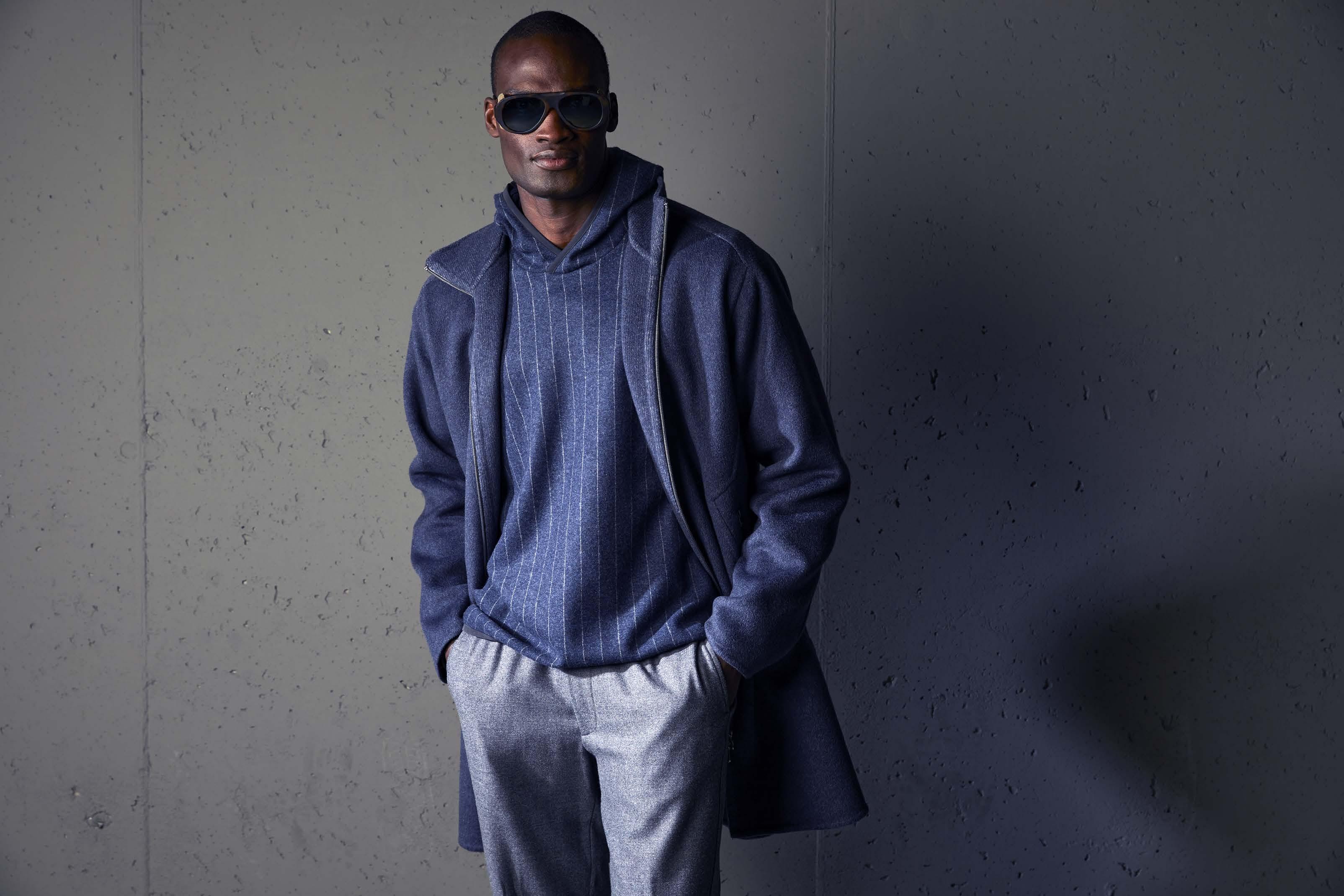


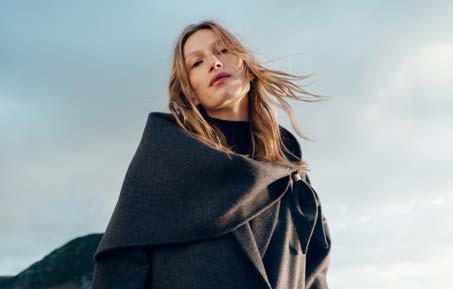
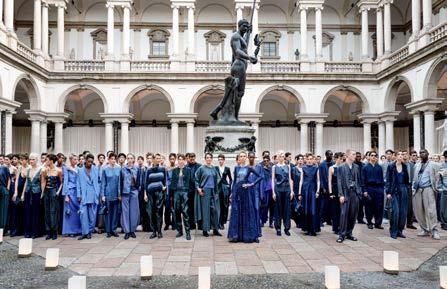




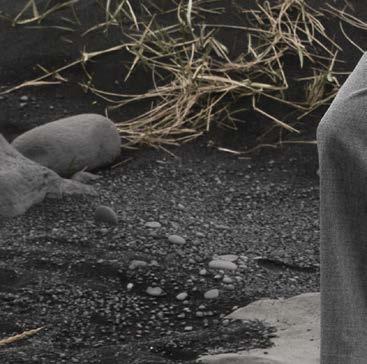
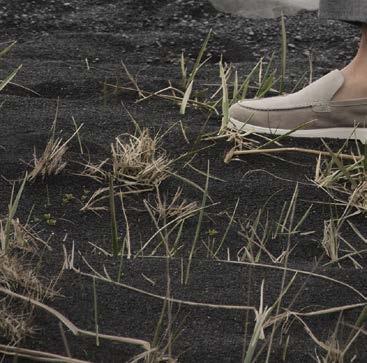

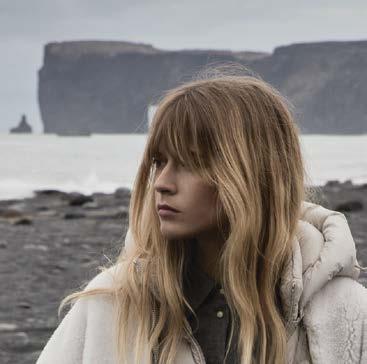


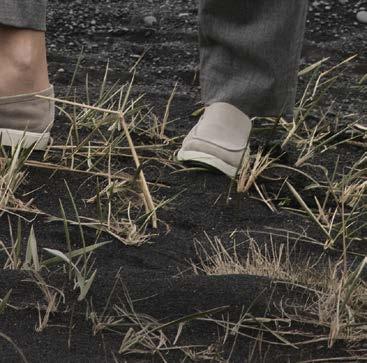




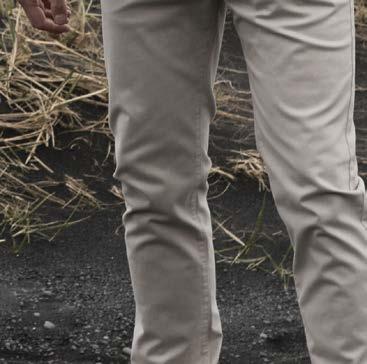



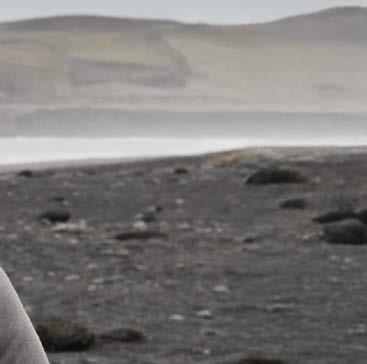
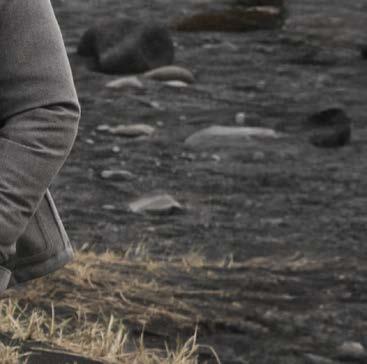
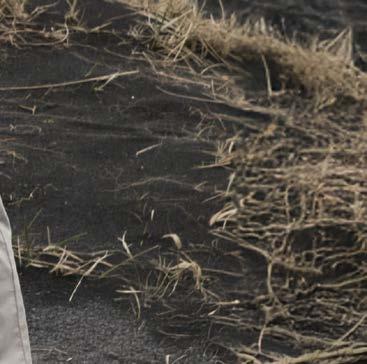
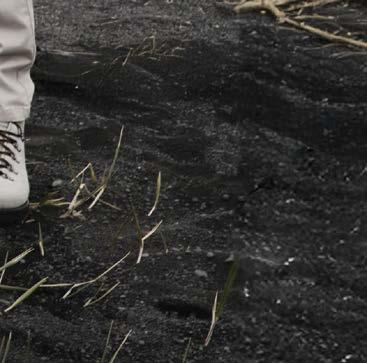
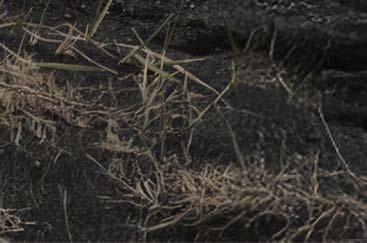
When American sports heritage meets Parisian refinement, the result is a sneaker with timeless allure. The new Autry x Maison Kitsuné collaboration reimagines the classic Medalist model in a contemporary key, blending vintage U.S. style with the sophisticated restraint of French fashion. The capsule celebrates a creative dialogue between two brands that share the same philosophy: Autry, the 1980s icon of athletic footwear, and Maison Kitsuné, the Franco-Japanese label known for its essential aesthetic and cosmopolitan spirit.

The dialogue continues between MM6 Maison Margiela and Salomon, two brands that naturally merge stylistic research and technical innovation. The new Fall/Winter 2025 collection marks another step forward in their shared vision of functional fashion and contemporary design, uniting sartorial savoir-faire with outdoor performance. The line reinterprets MM6’s urban aesthetic through Salomon’s technical approach, featuring modular pieces and high-tech materials made to adapt to any environment from city streets to mountain trails. The result is a versatile, fluid wardrobe that reflects the spirit of those who move through everyday life with ease, without compromising on style or comfort.

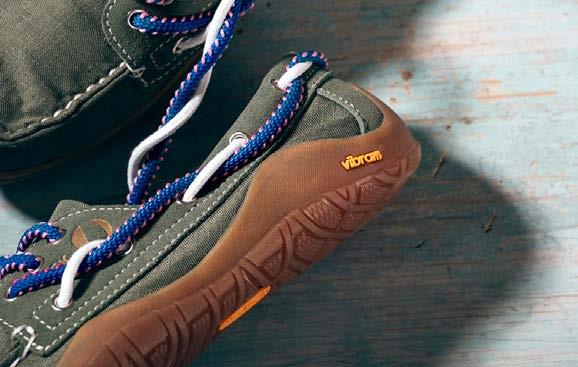
Murphy&Nye, the historic brand rooted in sailing and technical apparel, signs a new collaboration with Vibram, world leader in high-performance soles. The result is a collection that fuses maritime heritage with cuttingedge technology, giving life to two exclusive models Optimist and Deck that reinterpret the brand’s seafaring spirit through a modern lens. Two shoes that tell the story of the sea in a contemporary language, merging aesthetics, performance, and comfort designed for those who live each day with energy, curiosity, and freedom.

After six years, Martine Rose and Napapijri reunite, bringing back one of the most influential and recognizable partnerships in contemporary fashion. The new Fall/Winter 2025 collection marks the first drop of a project that revisits the archive with fresh eyes, merging technical heritage, street culture, and a rebellious spirit. Between 2017 and 2019, the British designer and the Italian brand had already redefined the boundaries of fashion outdoor. Today, that same alchemy returns in a renewed form a dialogue between functionality and aesthetic identity, where both brands’ codes intertwine in a shared language of contrasts, innovation, and memory.
Blauer and Pirelli join forces for a limited-edition capsule that blends urban design, technology, and sustainability. A collaboration that embodies the perfect synthesis between technical heritage and experimentation, between contemporary workwear and metropolitan spirit. Both brands share a philosophy based on quality, innovation, and attention to detail: Blauer draws on its roots in technical workwear reinterpreted through a fashion lens, while Pirelli stands for performance, research, and technological development. The result is an urban, genderless collection designed for those who take on the city with energy and personality where functionality and style meet in perfect balance.

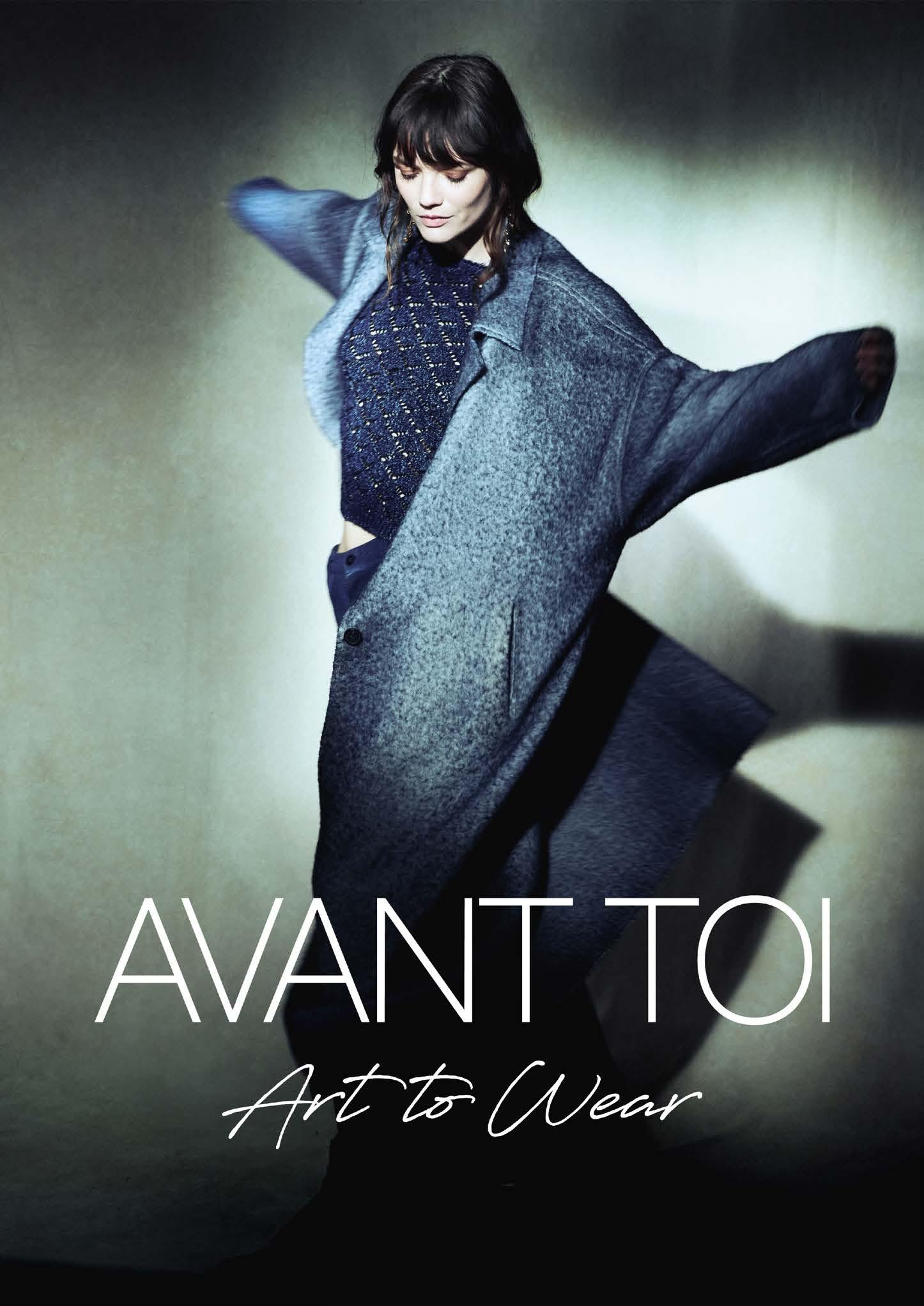
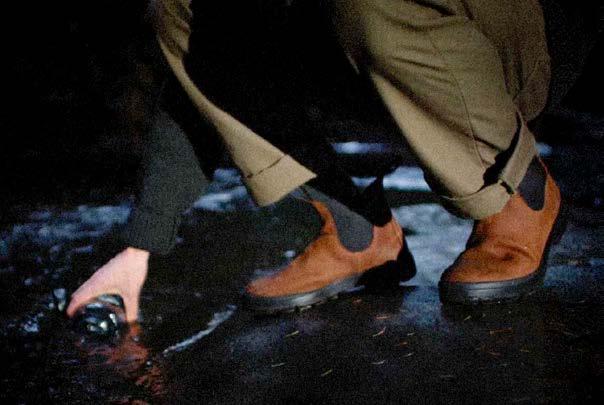
The partnership between Blundstone, the renowned Australian footwear brand, and Filson, the historic apparel label rooted in the Pacific Northwest, celebrates a shared commitment to craftsmanship, durability, and timeless design. This limited-edition collaboration brings together over 250 years of combined tradition. The proposal includes three versions of the iconic Chelsea boot: the #2534, crafted in textured black bison leather; the #2535, in waxed suede in a sienna-earth tone; and the #2536, made from oiled and waxed teakcolored nubuck.

Octobre Éditions unveils a capsule collection in collaboration with artist Clovis Rétif 12 exclusive, limited-edition pieces where each garment becomes a storyteller. From evocative knitwear to a weekend bag adorned with patches, every detail captures emotion and remembrance. The encounter between Clovis’s poetic universe and Octobre’s Parisian craftsmanship gives life to creations infused with authenticity and meaning. Blending vintage American references with traditional Asian imagery, each piece tells a story suspended in time.
K-Way marks 60 years of style and innovation with a book by Pascal Monfort, chronicling the story of the legendary windbreaker born in Paris in 1965. From Léon-Claude Duhamel’s original creation to the global revival led by BasicNet, the brand has become a worldwide icon of functionality and design. The richly illustrated volume, featuring contributions from designers and artists, traces a journey of creativity, collaboration, and sustainability. Celebrations also include the traveling exhibition In Y/Our Life, which arrived in Paris in October 2025 at Atelier Richelieu, transformed for the occasion into the vibrant K-Way Social Club.
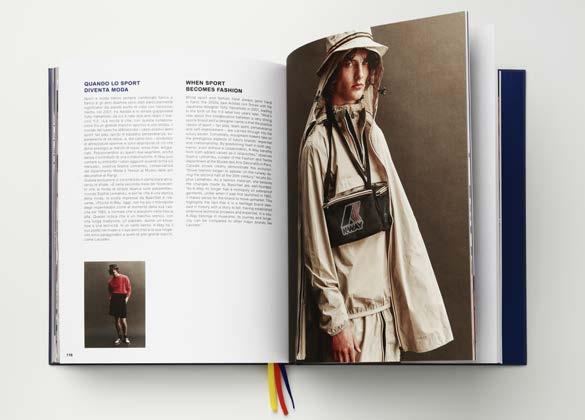
Moncler and JW Anderson reinterpret technical outerwear with two new puffer jackets, available in both men’s and women’s versions. The inspiration draws from an archival collection that celebrates their enduring creative partnership. Each down jacket merges the Italian luxury brand’s craftsmanship of French origin with JW Anderson’s distinctive design details, including the signature puller, detachable hood, and embroidered logo. Here, tailoring meets performance in a padded jacket filled with down and finished in fine cotton gabardine.
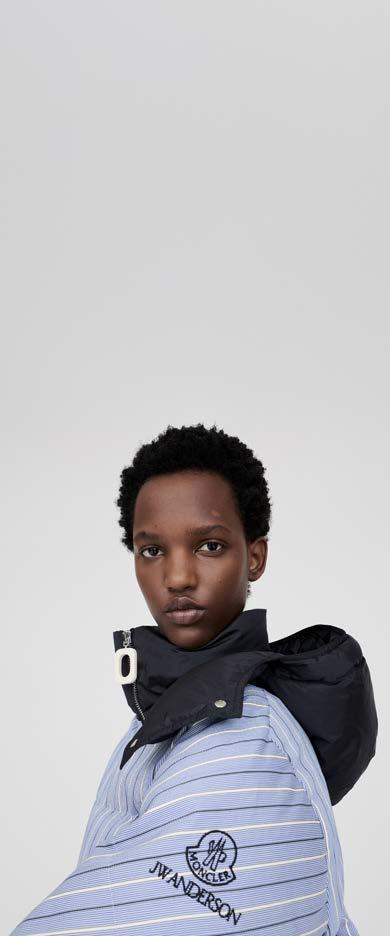

The classic Sebago penny loafer is reimagined for Fall/Winter 2025 through the creative lens of forte_forte. Three exclusive variations bordeaux shine, urban black, and wild dots blend artisanal quality with a touch of glam. The iconic American silhouette transforms into a symbol of contemporary elegance, balancing heritage and modernity. A capsule collection that celebrates timeless style with a luminous, sophisticated twist.
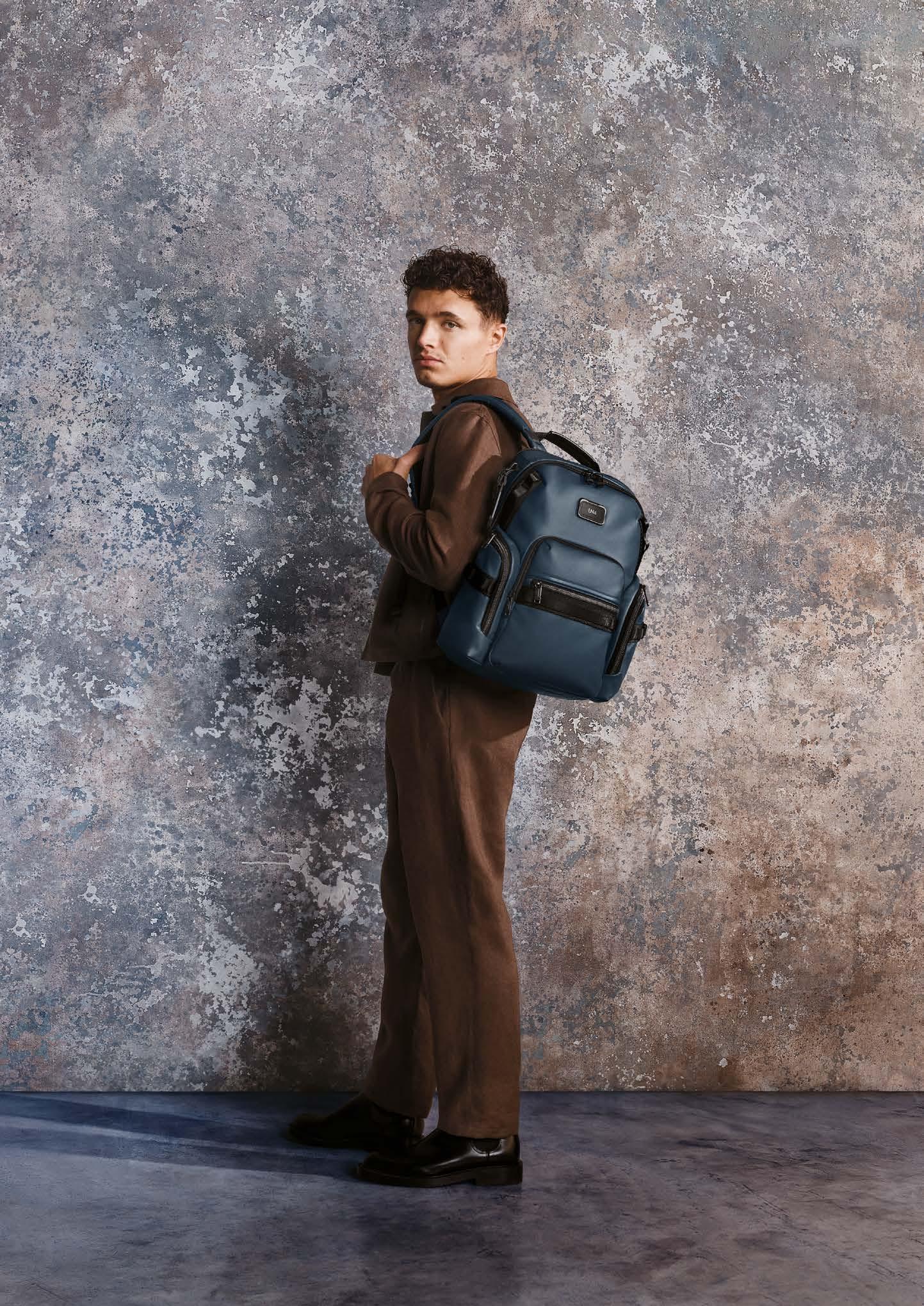
Canali, a symbol of Italian sartorial excellence in luxury menswear, continues its international expansion with the opening of two new flagship boutiques in Beverly Hills and Seoul, consolidating its presence in key markets across North America and Asia. With these openings, Canali reaffirms its commitment to promoting Made in Italy craftsmanship on a global scale. From West to East, the brand continues to embody a philosophy of style that harmoniously blends tradition, innovation, and timeless craftsmanship.
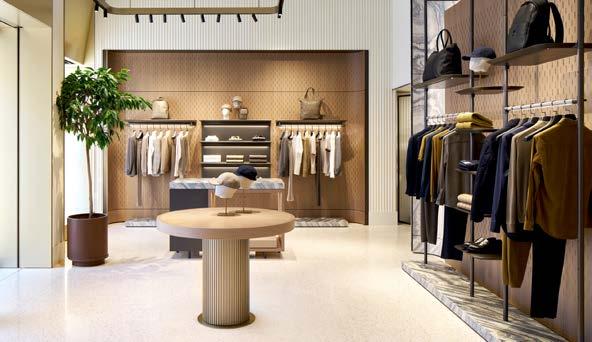

Building on its expansion in the Chinese market after its debut at Galeries Lafayette, ZONA20 MILANO opens a new Pop-up Boutique at Réel Shanghai. Located along Nanjing West Road, in the heart of Jing’an’s luxury district, the space captures the brand’s urban and minimalist essence. The pop-up is designed as a haven of calm where design, nature, and tailoring engage in dialogue: raw concrete, smoked glass, and Portoro marble create a balance between Mediterranean warmth and architectural precision. An immersive experience to discover the Fall/Winter 2025–26 collection, open to the public from October 1st, 2025.
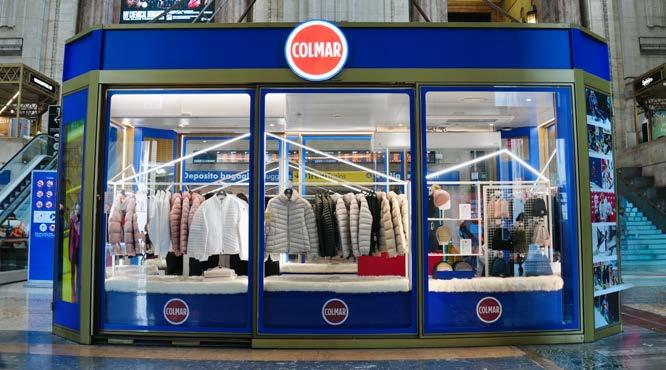
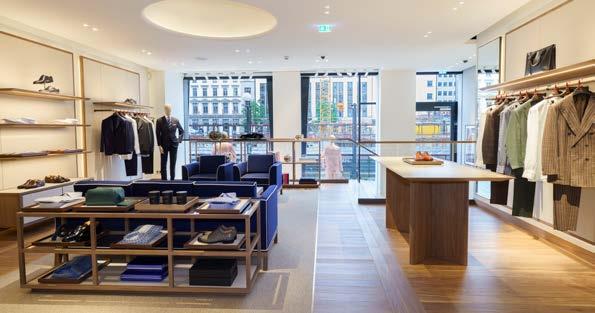
Kiton, an international icon of Italian sartorial excellence, inaugurates its new boutique at Neuer Wall 69, one of Hamburg’s most prestigious addresses. This opening marks an important milestone in the brand’s growth strategy in Germany, reaffirming its unwavering commitment to quality, timeless elegance, and artisanal mastery. The new space fully embodies Kiton’s aesthetic and philosophical vision, combining harmony, light, and sophistication. From the entrance, visitors are welcomed into a naturally bright environment — two large windows positioned on opposite sides create a visual axis that fills the boutique with light, enveloping guests in an atmosphere of serenity and refinement.
Colmar celebrates its heritage and passion for the mountains with a new pop-up store inside Milan Central Station, open from October 1, 2025, to February 25, 2026. The initiative transforms one of the city’s most iconic locations into an immersive experience, where design, technology, and sporting tradition merge to tell the story of over a century of innovation and Italian style.The installation draws inspiration from the historic Lagazuoi cable car in Cortina d’Ampezzo, reinterpreted by Colmar in a contemporary way: a cabin suspended between past and future welcomes visitors into a space of strong visual impact.
JW Anderson unveils an exclusive pop-up at Galeries Lafayette in Paris, marking the official debut of the brand’s new visual identity and the beginning of an exciting new creative chapter. Open until October 15th, the pop-up offers visitors a firsthand opportunity to experience the renewed aesthetic universe of JW Anderson in the French capital with exclusive products available only at this location. Conceived as a tactile and immersive space, the installation celebrates the beauty of imperfection and the intimacy of the handmade core elements of the brand’s identity. This initiative represents a new milestone in JW Anderson’s stylistic evolution, reaffirming the dialogue between craftsmanship and conceptual innovation that defines its vision.
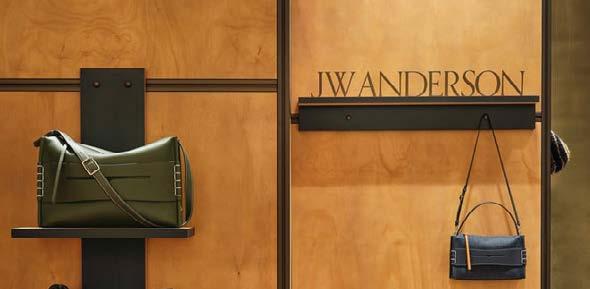
PREMIUM YARNS KNITWEAR
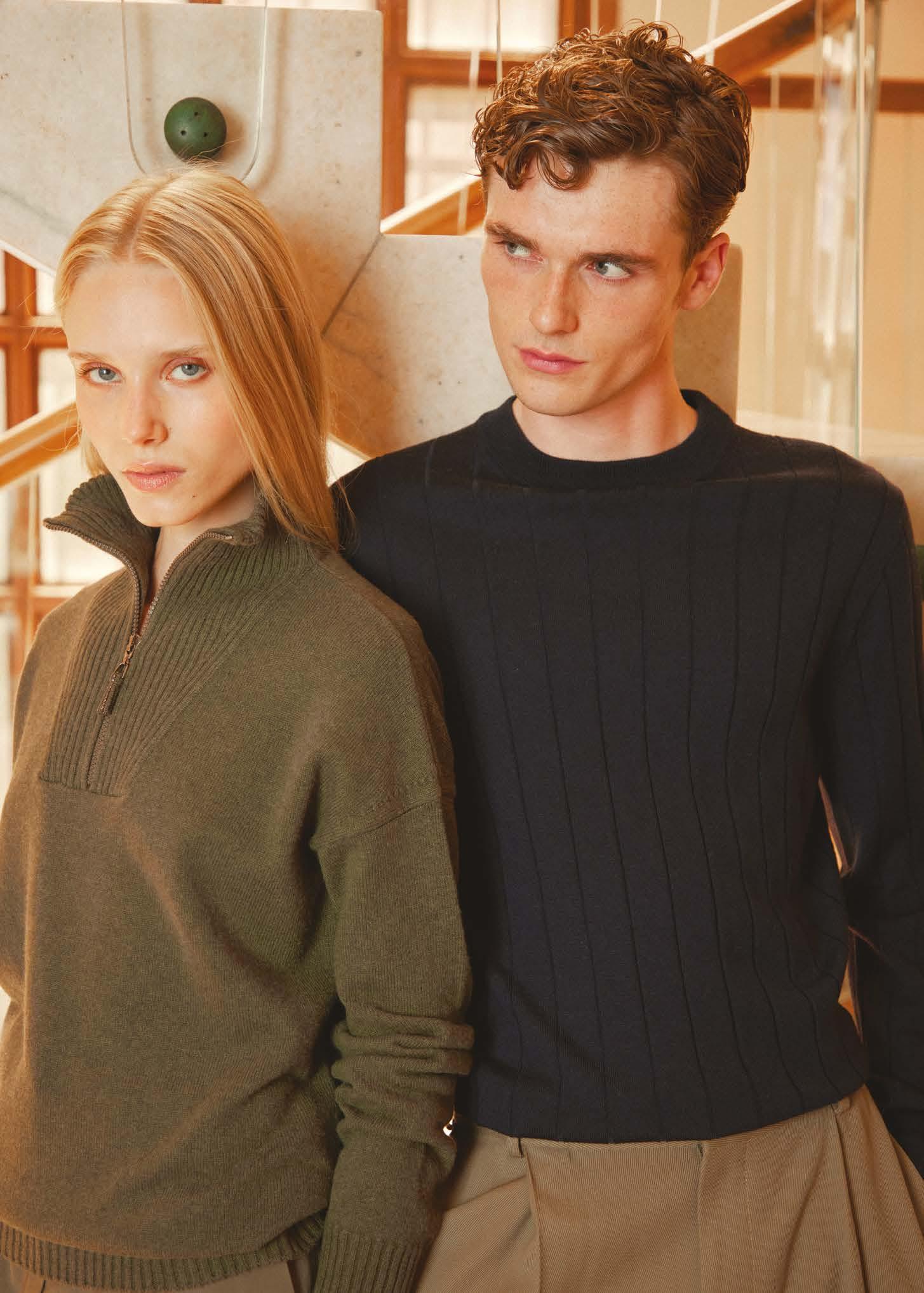
SINCE 1967
INSPIRING VALUE AND BEAUTY
Kangra turns the world’s finest natural fibers into timeless expressions of elegance and authenticity. Each piece reflects the art of Italian craftsmanship, where material becomes emotion, and beauty endures through time.
Not to be first, but to endure. Three minds, one shared thread. Puraai, a post-luxury brand, stands for sneakers and design as a conscious gesture, where every detail carries meaning and continues to live through time
by Valeria Oneto



There are those who start a brand from a business plan—and those who start from a journey. Puraai was born this way: from a plastic bottle in a Tokyo convenience store and from three very different people, united by the idea that a sneaker can be born from thought, not just from trend. On that bottle, the Japanese symbol “ラ” became the spark for a project that speaks of rebirth, balance, and conscious beauty. Federica Murer, the group’s visionary soul, grew up among the scents of materials and the lights of workshops in her native Veneto. She turns intuition into coherent imagery. She travels, observes, absorbs. Her creativity is not only aesthetic, but visionary, transforming inspiration into stories. Emiliano Aiardi comes from the mountains of Trentino, and occasionally from the peaks of the Himalayas. After being rescued by helicopter during a climb, his partners “gently” suggested he rethink his lifestyle. Today, he is the brand’s technical heart — the one who gives tangible form to visions. After nearly ten years in London, Andrea Redi joined the duo in 2023, bringing with him structure, vision, and a touch of AngloSaxon precision that balances creative energy. The result is a rare equilibrium between head, heart, and hands. Three different paths, one shared vision: to build something meant to last. From this encounter came a brand that merges design and responsibility: vegan, PETA-Approved sneakers, made from innovative materials derived from corn, apple, and

mushrooms, followed carefully through every production phase between Italy, Portugal, China, and Tunisia. Each model tells a story: the Vintage, a nostalgic yet conscious icon; the Panther, a symbol of essential elegance. With Lion and Lizard, Puraai explores lightness and new proportions. From Venetian workshops to 600 European stores, Puraai grows by choosing authentic relationships. A Parisian buyer once defined them as post-luxury: a kind of luxury that doesn’t flaunt, but tells. Today, the brand looks ahead — ready to expand beyond sneakers, toward apparel and design.
Puraai was born from a small detail on a plastic bottle in Japan. Can you tell us about that exact moment? What did you see in the symbol “ラ” that made you say: “This is it”? We were in Japan with no set plan, just open to inspiration. What struck us most was the almost obsessive use of plastic: fruit and vegetables wrapped individually, bottles everywhere. In a Tokyo convenience store, we noticed the symbol “ラ” on a recyclable bottle. It wasn’t just a mark — it was a message. In Japanese, pura means plastic, ai means love. From that, the idea was born: to give new life to what the world tends to throw away.
You’ve worked for years as designers for international brands. When did you decide to stop interpreting someone else’s dream and start building your own? It happened gradually, although deep down we’ve always
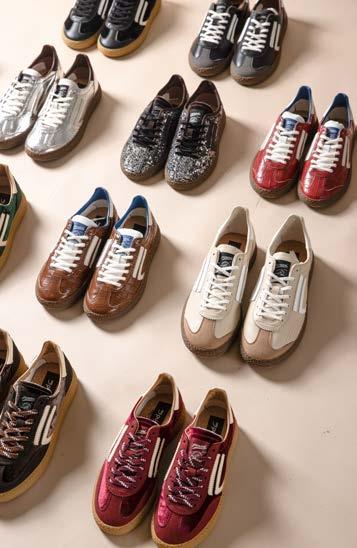
Puraai sneakers are vegan and cruelty-free. On the right and center: the XS model. On the left: the Vintage sneakers in vegan leather. All feature the signature crepe sole, a distinctive mark of the brand

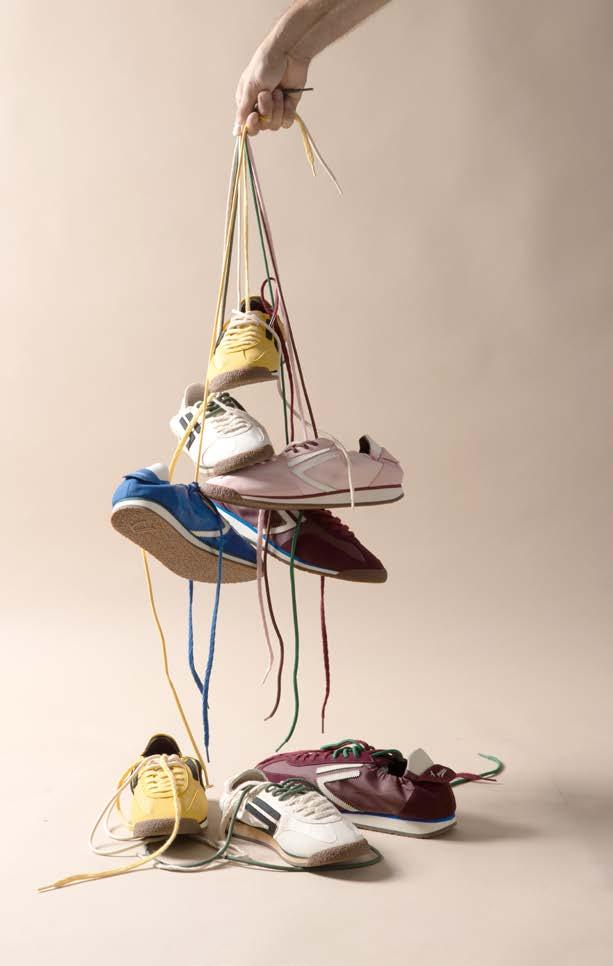
known it. After years spent shaping other people’s dreams, the time came to tell our own. We tried to propose sustainability and vintage forms to our clients, but it was always too early or too expensive. So, with a bit more courage and a touch of recklessness, we decided to do it ourselves.
The Vintage was Puraai’s first model, and it remains one of your best sellers. What did it represent for you then, and why, five years later, is it still so loved?
The Vintage was born with the soul of the past and the consciousness of the present. A familiar silhouette, built with new and vegan materials. It was our first statement: a sneaker that unites aesthetics and responsibility. It doesn’t aim to impress, it aims to endure.
Today, the Panther is your signature shoe. What makes it special compared to the others? Is it the shape, the palette, or something more subtle, almost emotional?
The Panther is the idea everything started from. It was born even before Puraai, in the streets of Le Marais in Paris, while visiting a flea market filled with vintage shoes. At first, it seemed too thin, too hard to read. We worked on it for years, until the idea became mature. And today, the market proves us right.
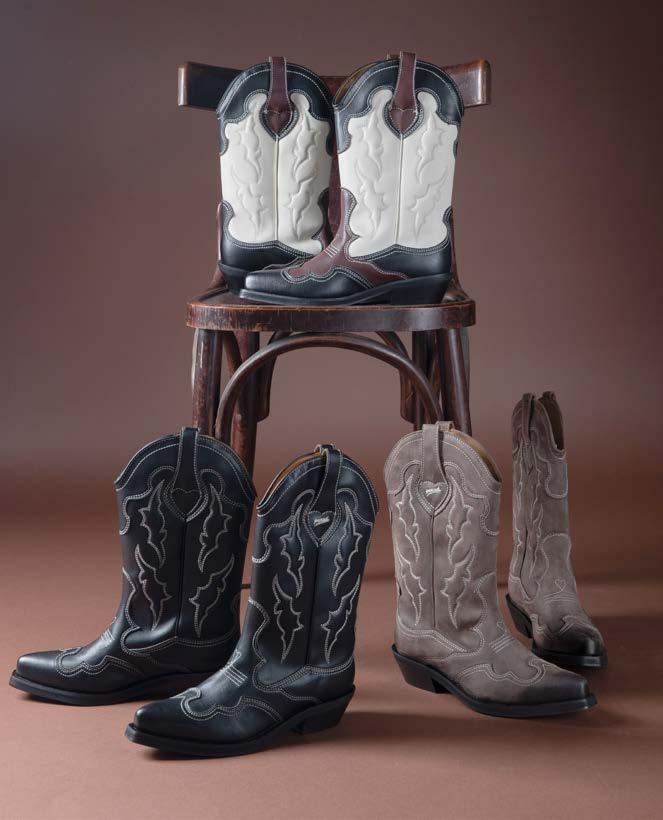
The new Lion and Lizard seem to anticipate a new phase for the brand. What do they say about you today, and where do they take you tomorrow?
Lion and Lizard look to the future, but in a way different from the Panther. Lizard is a ballet flat, explains Federica, while Lion is a low, completely deconstructed shoe: light and delicate. Perhaps less mainstream and immediate, but more refined. And this, too, is part of our ongoing path of experimentation and research.
In your journey, every sneaker seems connected by a red thread of consistency. How do you evolve an aesthetic without betraying your identity? Has there ever been the temptation to “please the market” rather than stay true to Puraai’s dna?
The temptation is always there, but it’s also the fastest way to stop being yourself. We prefer to remain coherent, experiment, and work deeply. That’s where true identity is born.
Every brand has a defining moment. Was there ever an event, a mistake, a challenge, a meeting, or an unforeseen incident, that changed Puraai’s trajectory?
We’re a young brand, but we’ve already experienced a lot. One of the first seasons when orders were starting to grow, the company
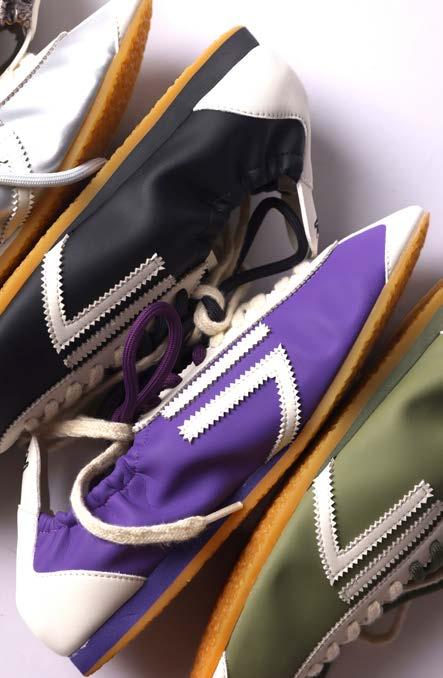

producing our soles caught fire. Beyond the disappointment, you can imagine the dismay: we had the orders, but no soles. Yet even from that, we learned to react, rebuild, and grow.
Your sneakers are designed in Italy and produced across Portugal, China, and Tunisia. How do you manage to maintain quality control and ethical consistency throughout the supply chain?
Every model is born in Italy and followed step by step. We’re often at the factories, working closely with suppliers, and we rely on local partners who ensure daily oversight. We don’t claim to save the world, but we believe in the value of change, a journey that involves the entire supply chain. The principle of cruelty-free is at the core of everything we do. Our products are PETA-Approved and demonstrate that it’s possible to innovate without ever compromising beauty.
From Venice to over 600 European stores: a vertiginous journey. What has been the key to this growth? How do you manage such a wide network today without losing authenticity? What are the next objectives?
We don’t know if it’s the “right” path, but it’s ours. We prefer to grow slowly, find the right people, and share a common approach. We don’t chase quantity, we chase relationships that make sense. One day, one of the most influential retailers in Paris called us post-luxury: it was the most beautiful compliment. For us, true luxury doesn’t flaunt, it tells a story.
On several occasions, you’ve said that Puraai is “not just sneakers, it’s a lifestyle.” What does that concretely mean for you? How do you build your community?
It means consistency. Doing things well, without forcing them, without imposed trends. We believe we’ve created a beautiful shoe with great comfort. When you put on something beautiful in the morning, it makes you feel better too. It’s a small thing, but it changes your day.
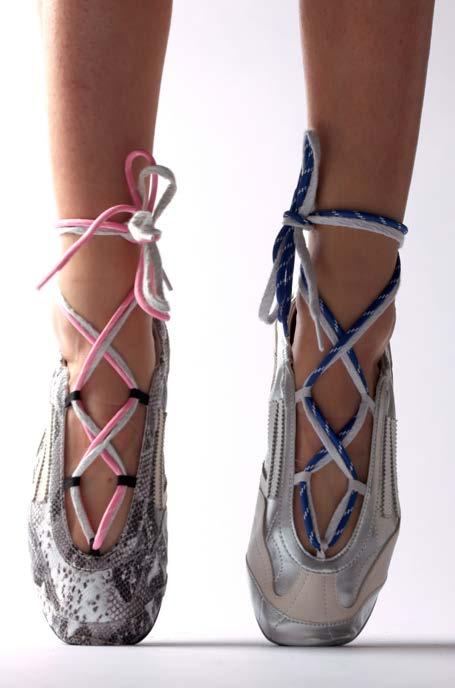
Being “responsible” comes at a cost: materials, research, time. How do you manage to stay “premium yet accessible”? Is it a constant challenge?
It’s the most interesting challenge. “Premium” doesn’t mean elitist, and “accessible” doesn’t mean cheap. We manage to maintain balance thanks to a lean supply chain and conscious management. We invest in research and cut the superfluous, to offer a product that is beautiful, ethical, and durable at a fair price.
Let’s talk numbers: how did 2024 close, and what are your growth projections for 2025? Is there a symbolic target you’d like to reach?
2024 was the year we laid strong foundations. In 2025, we are growing by over 250%. Italy remains our primary market, accounting for around 55% of total revenue, but international markets are growing fast: Germany, France, Benelux, and Spain are now key. In 2026, we will consolidate the European network and develop some extra-EU markets. This is not a race for numbers, but growth built with care.
Federica: Numbers aren’t exactly my strong suit, but I have a vision board in the office: windows, targets, and even some data. So far, everything is coming true, but for good luck, I won’t reveal the next goals.
Where do you see Puraai in ten years? Will it still be a sneaker brand, or something bigger, a manifesto for how fashion can be ethical, beautiful, and contemporary?
For us, Puraai is a lifestyle. We’re working on apparel, but we don’t want to stop there. The goal is for Puraai to become an experience that leaves a mark.
Emiliano: What matters is that everything we do continues to have a soul, a story, a human touch. Because in the end, that’s what remains.

Between Ablondi’s pop anti-heroine and Superficial Culture’s conscious luxury, Winter 2025 becomes a manifesto: femininity that subverts, materials that speak, style that thinks and commands the stage
by Sara Fumagallo

ABLONDI drags Winter 2025 into a dimension where femininity rules, subverts, and captivates. The imagery draws from the pop cult of Modesty Blaise, transforming the anti-heroine into a new archetype of power. Sharp mini dresses and gravity-defying jumpsuits celebrate a strategic body, brilliant mind, and disarming seduction. Sixties glamour meets the absurd: fur trims, pompom buttons, and kitsch accessories destabilize the rules. Every garment plays with perception, a sartorial sleight of hand where nothing is as it seems. The iconic exposed navel becomes a stage weapon, appearing across tightly fitted playsuits and provocative shirts. A monochrome palette and circus-inspired details create a hypnotic effect, balancing eroticism and irony. Arianna Ablondi Pedretti, founder and creative mind behind the brand, aims to dress a woman unafraid of her creative fury, using it as a narrative fuel. Italian craftsmanship and conceptual rebellion coexist in a luxury that thinks, acts, and strikes. A collection for those who prefer to be the protagonist of the story, not the plot twist.
Instagram. @ablondi._ missablondi.it
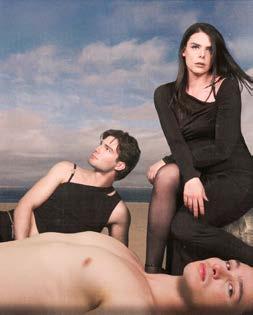





A new grammar of glamour is born: conscious, tactile, timeless. Garments that rise from the dark like metropolitan sculptures, carved from ethics and desire. Black and mocha become visual alphabets of roots, memory, sensuality. Recycled materials and organic cotton speak of tangible sustainability not of polished promises. Genderless fluidity and relaxed draping trace an elegance that embraces everybody. Water, the protagonist of the campaign, flows as a symbol of rebirth and continuity. Not a drop, but a ritual: bringing back to light what truly matters and endures through changing times. Superficial Culture is the new brand by Andrea Balducci, redefining luxury through a clear philosophy where aesthetics and culture are inseparable. Each piece is a manifesto to be worn a gesture of responsible beauty. Italian fashion that evolves, persists, and transforms surface into meaning.
Instagram. @superficial.culture superficialculture.it
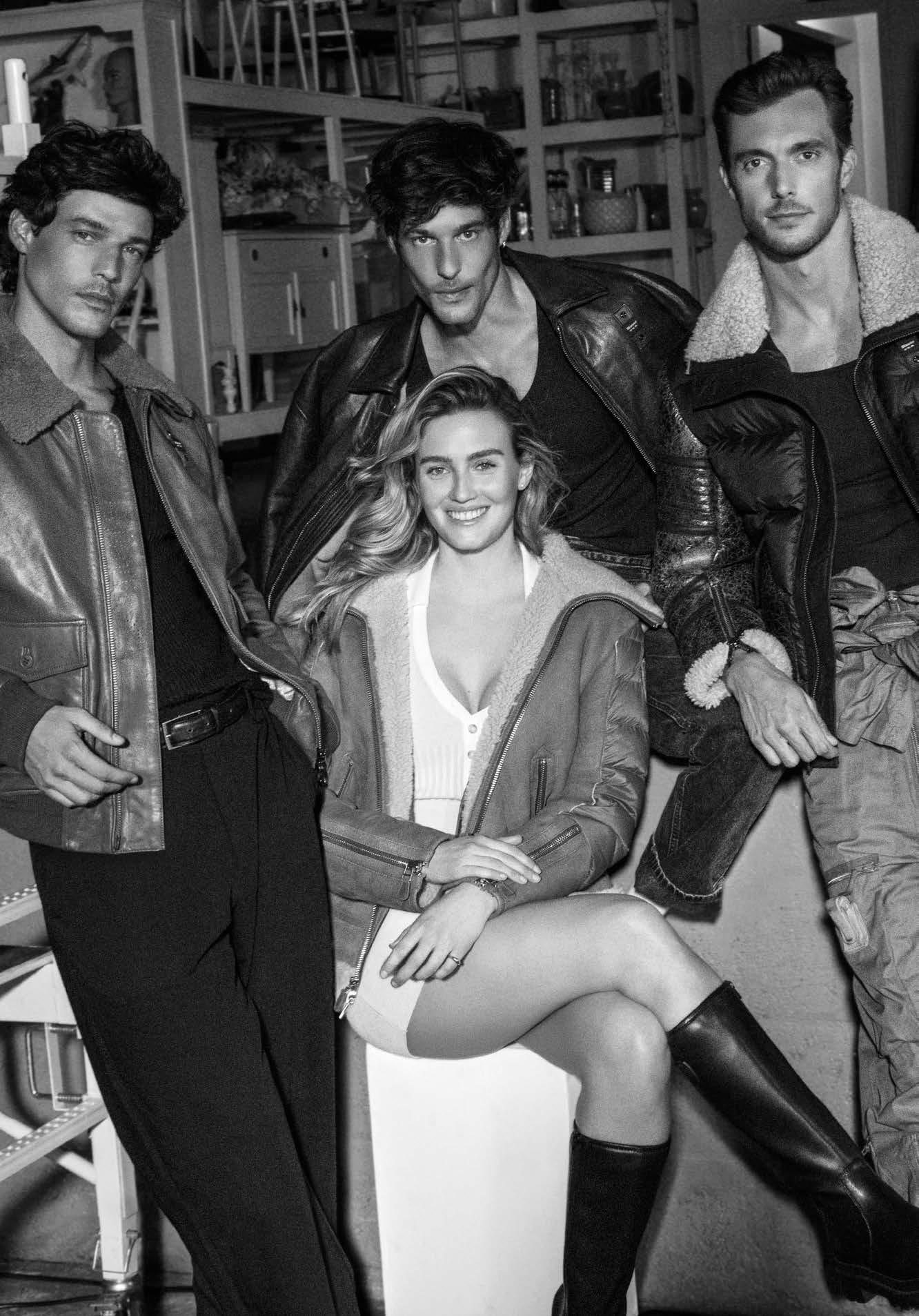
Noble fabrics drive Italian innovation. Cashmere, vicuña, merino wool: Italian brands are rewriting the rules of outerwear with performance and timeless elegance
by Valeria Oneto
Outerwear is evolving, driven by a growing interest in noble yarns such as cashmere, merino wool, vicuña, and alpaca symbols of quality and awareness. Not a fleeting trend, but a choice of value. A concrete response to an evolving demand, where quality, comfort, and sustainability are essential criteria for consumers. Leading the way are Italian brands Agnona, Kiton, Sease, Piacenza 1733, MooRER, Aspesi, and Montecore, which weave craftsmanship and innovation into elegant and functional
1 Noble fabrics have returned as protagonists of both men’s and women’s wardrobes. Can you share an episode that confirmed this trend perhaps a client or event that made you realize cashmere and precious fibers are today’s “must-haves”?
2 Behind every jacket is a story of threads and fibers. What are the most precious yarns, and how do you choose them for outerwear? Is there a technical or creative detail that makes one garment stand out from another?
3 When opting for pure fibers or blends, how do you transform the fabric into a garment that truly “works”? Can you give a concrete example where lightness, warmth, durability, and style found their perfect balance?

STEFANO AIMONE ceo & art director AGNONA
1 Today, anyone who touches quality immediately perceives it and rarely goes back. The boom in fashion and streetwear has led people to evaluate garments not only for appearance but especially for comfort, material quality, and craftsmanship. This shift in approach has led many to invest in durable products that accompany them over time rather than merely following passing trends. This is how the concept of “quiet luxury” was born: a segment destined to consolidate, because there is a substantial market of people who want to dress with quality and sustainability, favoring well-made garments over trendy labels.
2
Noble fibers like cashmere, vicuña, silk, linen, and alpaca require extreme attention. Vicuña, for example, is extremely rare and can only be processed through a Peruvian consortium, reserved for very few brands worldwide. Even in blends, the right balance
garments. Cashmere remains the star: according to Fortune Business Insights, the global market will grow from $3.63 billion in 2025 to $4.86 billion in 2032 (+4.29% annually). In Italy, the sector is valued at $104.7 million in 2023, with estimates reaching $162.2 million by 2030 (Grand View Horizon Research). Behind the numbers lies a cultural revolution: consumers choose garments that last, rewarding excellent materials and masterful workmanship. Quality is recognized by touch, and Italian outerwear continues to set the pace for conscious luxury.
4
Behind every jacket is a journey from raw material to finished garment. What are the key steps that still require manual intervention or craftsmanship? A gesture, a technique, a moment where human touch makes the difference.
5
Double-breasted, pea coats, unstructured jackets what models represent your signature?
6
Looking ahead, how are you pushing the limits of noble fabrics? New materials, production techniques, or designcan you tell us about an ongoing project or experiment that excites you?
is crucial: percentages that are too low, like 90-10 cashmere blends, risk compromising the fiber’s properties. At Agnona, we prefer more balanced combinations, such as 6040 or 30-30-40 blends of wool, cashmere, and silk, to ensure lightness, performance, and tactile quality. Every yarn determines comfort, durability, and overall performance like a Stradivarius violin or a sports car: raw material quality is essential and requires constant care.
3
Blends can have technical or economic purposes. We maintain fiber purity as much as possible, but combinations like cashmere-silk, cashmere-cotton, or cashmere-wool allow garments to achieve sheen, lightness, and improved thermal performance. Wool, for instance, has natural thermoregulating properties that cashmere lacks; blends must enhance the functional performance of the fabric, not just serve as marketing or a label.
4
Manual skill remains central in garment production. The creation of stitched details, leather interventions, and special seams requires artisanal competence. Even modern double fabrics require precise handwork no machine can replace these gestures. Thanks to this craftsmanship, Agnona garments preserve tradition and become unique, carrying the history and excellence of human work.
5
Double-faced fabric and outerwear are the pillars of our production. Double-faced fabric allows us to make light, unlined but warm and durable garments. Women can stand out with our aesthetic, while men remain faithful to a modern classic.
Double-breasted jackets are reinterpreted in a contemporary way: unstructured, versatile, and easy to wear. Our clients are generally over 40, both men and women, and appreciate the combination of elegance, functionality, and discretion.
6
For Agnona, innovation means preserving tradition while reinterpreting it in a modern and enduring way. We seek high-performance, thermoregulating noble fibers, respecting their intrinsic characteristics. The challenge is integrating technical materials without compromising softness, lightness, and sensorial quality, offering garments that are functional, elegant, pleasant to touch, and lasting without losing aesthetic or practical value.

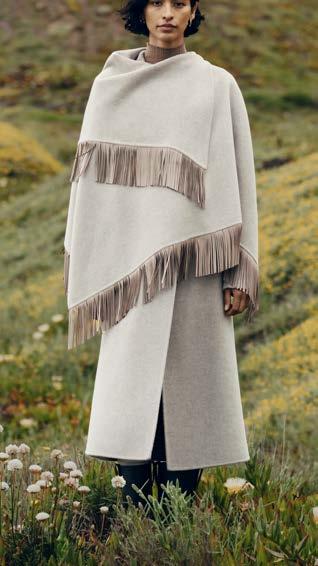

1
Kiton has always used noble fibers. We use the finest fabrics in the world across all products, not only in classic outerwear but also in sportswear and jackets. Cashmere, beaver, and other high-quality raw materials are at the core of our philosophy. Since 2008, with the acquisition of the Carlo Barbera mill, our research and experimentation with noble fibers has become even more advanced, allowing us to produce and innovate internally. Today, the market recognizes this attention: customers are more aware and attentive to quality.
2
We always start with the yarn. Our search for top-quality materials extends beyond cashmere to pure wools, with micron counts sometimes exceeding vicuña. We work with 12–13.2 micron wools and Mongolian cashmere, extremely precious yarns. Yarn is the

1 For MooRER, noble and precious fabrics are not just a trend, but a fundamental part of our identity. Our dedication to absolute quality and the selection of the finest fibers is integral to how we conceive our products. Today, this vision is recognized by a discerning clientele seeking garments that express authenticity and exclusivity. It’s through direct dialogue with customers that we confirm how precious fibers have become an essential element of the contemporary wardrobe.
2 Every MooRER garment begins with the idea of creating something unique, combining excellence in raw materials with refined design. Our research is constant, focused on rare fibers such as Yangi from the Siberian IBEX goat, Alashan baby cashmere, and vicuña all available in extremely limited quantities. For
foundation: it determines comfort, durability, and the garment’s final appearance. Passion for raw materials is in our DNA, and our fabrics are recognized among the best in the world.
3
From the fabric, we experiment with new yarn types and blends, combining cashmere, fine wools, and other fibers. We aim to create modern, lightweight fabrics with aesthetic and functional depth. A concrete example is our reversible cashmere garments: in the sporty side, lightness, comfort, and convenience are fundamental. Reversibles perfectly balance style, warmth, and functionality.
4
Manual work is essential at every stage, especially with very fine materials. Loom tension, processing speed, and yarn twist require human sensitivity. Every gesture enhances the fiber and completes the garment, just like in cooking, where every ingredient must be measured and worked carefully to achieve the final result.
5
Today, there is no single model that represents Kiton’s signature, but a way of dressing and interpreting fashion. Double-breasted, pea coat, or unstructured jackets are chosen based on season, climate, and function. There is a return to more constructed garments in cold seasons, while unstructured jackets reappear in summer. Our signature lies in overall style and material quality.
6
In recent years, we have made great strides with the most precious fibers. Vicuña, for instance, has been developed in colored and
insulation, in addition to down, we use the eiderdown of Icelandic wild ducks, which offers extraordinary lightness and thermal insulation. Each material is enhanced through carefully calibrated weights, harmonious volumes, refined accessories, and balanced fits giving life to garments that unite comfort, performance, and elegance.
3
The design process starts with raw material, form, and versatility. We work the fabrics to enhance their intrinsic qualities, enriching them with water-repellent finishes, laminations, technical knit details, and hybrid weaves. One example is our wool and pure cashmere laminated gabardines, used to create pea coats, overcoats, short jackets, and business jackets, embellished with leather, fur, or knit inserts and padded with down achieving the perfect equilibrium between style, comfort, and functionality.
4
Every stage of production requires fundamental manual gestures from pattern making to material selection to garment inspection. Our in-house tailoring team conducts continuous fittings and tests to perfect comfort and aesthetic performance. It’s in these moments that human craftsmanship makes the difference, combining creativity and knowhow to ensure excellence and stylistic identity.
5
MooRER’s iconic garments arise from the balance between comfort, style, functionality, and innovation. Quilted pea coats and jackets made from wool with membranes or power-stretch technical fabrics are versatile
patterned versions, with light jackets weighing up to 350 grams. We have five to six types of vicuña in our collection, from ciolaro to denim, including light summer versions. For wool, we use 12.8-micron fibers, among the finest in the world. Innovation involves pushing the limits of quality and experimenting with top-quality materials while maintaining performance, lightness, and comfort.
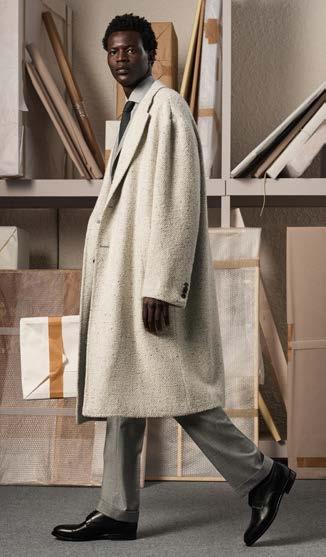
and high-performing, enriched with knitted wool details. Short jackets with knit or fur trims offer impeccable fits. The ability to blend casual padding with more formal structures like jackets, car coats, and double-waist styles best expresses our stylistic signature: refined, functional, and distinctive outerwear.
6
The Cashmere Long Yarn Project embodies our vision an exclusive knitwear collection that enhances the durability, lightness, and performance of the fiber. Although currently applied only to knitwear, it represents MooRER’s experimental drive toward innovative solutions, keeping fiber excellence at the center of creativity. In outerwear, we reinterpret traditional codes using precious yarns such as wool and baby cashmere in knitted structures. The result is a new generation of elastic, comfortable, and exclusive fabrics that combine softness, lightness, and down-like protection redefining the concept of luxurious outerwear through softness, warmth, and refinement.
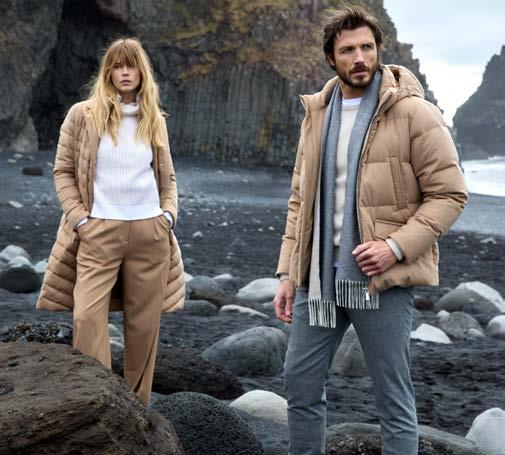

1Cashmere is not our core, but it’s an integral part of our collections. I prefer to focus on noble fabrics quality materials that go beyond the name. From Loro Piana, we use technical fabrics like Storm System, which allow us to create functional, everyday, and modern garments with thermo-sealed seams, ideal for city wear and layering. The same applies to Moon or Loden, chosen for specific coat silhouettes crafted with precision. We use cashmere in 5- or 12-gauge knits for both men and women, but it’s not a bestseller due to price. Among our top sellers is Shetland wool, a natural thermoregulator sourced from Scotland. Rather than relying on one single fabric, we interpret each material at its best, aware that noble fabrics are fundamental to product quality. Aspesi’s DNA is made of product: fabrics, quality, and innovation applied primarily to workwear and casual-
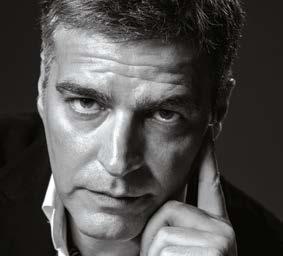
1 This trend didn’t arise from specific demand but has been part of our collections for years. Cashmere has always been central: our first cashmere jacket dates back 15 years and has never left our range. Initially aimed at select markets such as Russia, Korea, and Japan, it’s now appreciated in Italy and beyond. Montecore doesn’t follow trends but stays true to its DNA. The market has come closer to us, seeking solid, functional, timeless garments less extreme and ostentatious. For us, cashmere is a benchmark: elegant, durable, authentic, and perfectly in line with our philosophy.
2
The most important yarn is the one you feel in your hands. Touch is fundamental we never choose a cashmere or fiber that doesn’t fully convince us tactilely. We work with specific yarn counts and microns, such
wear. We’ve reintroduced fabrics like Loro Piana, Loden, Moon, Kashmir, Popeline, Albini, and Iria, while also working extensively with nylon. Provenance matters: quality nylon means Japan; Shetland means Scotland. Being price-driven, we create a mix of materials while maintaining quality, with craftsmanship as a key element.
2
We work with various companies but rarely select yarns directly since we buy fabric bolts, not threads. We collaborate with Mille Fili for knitwear projects. Fabric quality determines garment performance: for functional nylon, we select materials with twoway, three-way, or four-way stretch to ensure comfort, elasticity, and premium hand feel. Loro Piana fabrics are instantly recognizable by touch coated, bonded, thermo-taped, and chosen according to warmth, waterproofness, comfort, and tactile identity.
3
Material choice depends on the product: we can’t use only noble fabrics, or the collection would exceed its price range. Business sustainability depends on this creating accessible yet durable products. Every fabric is chosen to balance warmth, waterproofness, breathability, and a tactile sensation consistent with the brand’s identity. The goal is to offer long-lasting garments, outside the concept of seasonal fashion. Aspesi isn’t a trendsetter but often a first mover in certain areas.
4
Craftsmanship is essential. While garments can be industrially produced, we reintroduce handmade components: wool collars, topstitching, hand-sewn zippers, and
as 160s or 180s, to ensure garments retain beauty, shape, and longevity. Yarn quality, craftsmanship, and attention to detail make all the difference. Some of our wools are even more expensive than cashmere. Our AēroTwill, for instance, is the result of years of experimentation: light, soft, warm, durable, and stylistically flawless. It proves that lightness, warmth, and durability can coexist harmoniously.
3
Every Montecore piece is the result of precise research. Lightness, fluidity, softness, and warmth are never accidental: every stage involves continuous testing until perfect balance is achieved. Without revealing industrial secrets, our principle is clear: whether specific characteristics and last over time without losing shape or comfort. As men tioned, AēroTwill is the perfect example once you wear it, you can’t go back.
4
Behind every jacket lies a true journey from raw material to finished garment. Each key stage re quires craftsmanship: cutting, sew ing, and finishing, with repeated and meticulous value lies in conscious human intervention: manual work makes the difference not only in final quality but also in respecting the raw ma terial. Even the finest fab ric, if not treated expertly, risks losing its properties
other artisanal details. Using excellent, compliant workshops is fundamental. The final price reflects the quality of the entire supply chain. Every gar ment begins with material selection and internal pattern development, while production is entrusted to specialized external makers for coats, blazers, trousers, and shirts all meeting strict standards for quality and price.
5
Our collections start from shirts, dresses, and safari jack ets, often using the same fabric across multiple versions. The blazer isn’t our main focus: outerwear and overshirts are our most iconic and important pieces. Client requests are handled in dividually without altering brand di rection. Collections adapt to different markets only through fit, climate, or color the DNA of the product remains unchanged.
6
Sustainability is central and must be integral to collections in both materials and processes. We work with certified, low-impact noble materials. Fashion cycles are long: it’s not enough to say, “I make a jacket in ReNylon.” One must understand its origin and how it fits into the supply chain. An interesting project is the Recycle Down Jacket, made with recycled down sustainable and accessibly priced, though banned in some Asian markets. Evolution happens through long-term projects. Fabric quality remains non-negotiable.
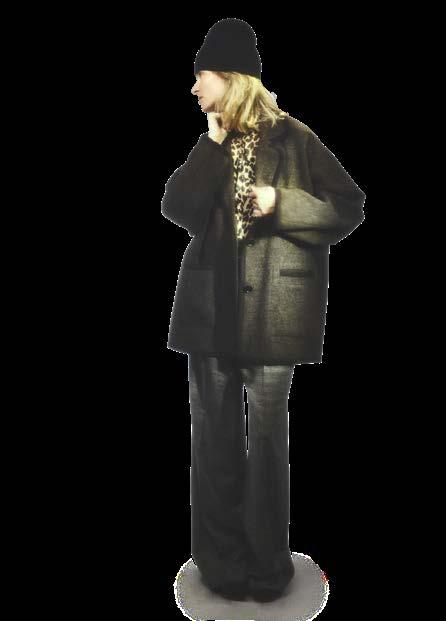
over time, compromising aesthetics, comfort, and durability.
5
Personally, I was born with the double-breasted jacket it’s part of Montecore’s DNA. My first garment, at 16, was a double-breasted white silk shantung jacket, tailor-made. I still keep it as a symbol of my passion for quality and tailoring. Elegant, structured, timeless it’s the model that best represents our balance of history, form, and technique. Every garment carries this signature, balancing aesthetics, functionality, and comfort while reinterpreting tradition in a modern key.
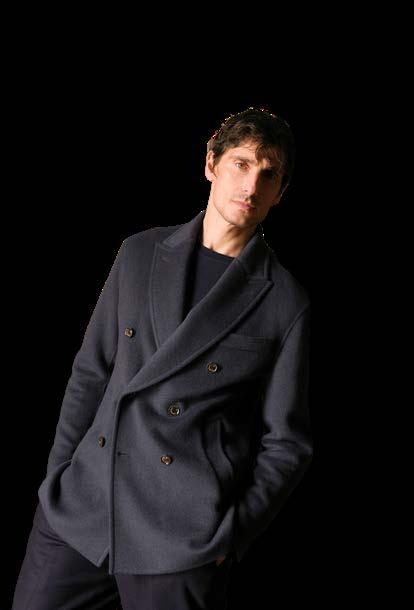
We don’t push noble fabrics to their limits we respect history and tradition. Wool and cashmere must be genuine, made from long fibers and woven carefully on proper looms. True performance arises from honoring these principles. We use, for example, a 500-gram triple-twisted Japanese loth, impossible to find in Europe, designed to last a lifetime and be passed wn generations. We also craft garments with technical membranes resistant to wind and water while preserving the comfort of noble fibers. We don’t hase trends we create substantial garments, beautiful to wear and built to last. AēroTwill and our membrane fabrics demonstrate how innovation, quality, material heritage can coexist, giving life to timeless

1
Cashmere and precious fibers are not a passing fad but a long-standing foundation of our work. For us, it’s natural to produce garments in noble materials, not microfibers. Over the years, we’ve seen an increasing use of fine fabrics in performance wear: cashmere with silk, cashmere with vicuña, rainproof and windproof treatments all while maintaining the hand and comfort of the fabric. These garments can be worn all day, in any setting. The trend is growing, and clients increasingly appreciate precious, functional materials.
2
Each fiber has its own characteristics: New Zealand wool is more “springy” than Australian wool; Mongolian cashmere is longer than Chinese cashmere but sometimes less fine. The “springiness” of wool refers to fiber elasticity, influencing the final

1
From the very beginning, our mission has been reinventing tradition through design and performance. Each time we develop a kit for a specific activity sea or mountain precious fibers like cashmere form the foundation of our research. For instance, our Ski Kit, renewed for the upcoming season, is highly appreciated: customers increasingly seek technical garments made with noble fabrics, true companions for their adventures. Many share stories of using Sease garments even in extreme conditions, like a mountaineer friend who climbed 8,000 meters in the Himalayas wearing a Sease Solaro down jacket.
2
We use refined fabrics from our heritage: baby cashmere, wish, merino wools, linen, hemp, and high-quality cottons. The intrinsic value of each fiber from thermoregulation to
fabric’s behavior. Yarn choice depends on the desired garment performance like cooking, even a simple dish requires excellent ingredients. If the wool is high-quality, the result will always be good. The hand must be perfect, beyond doubt especially for cashmere and fine wools.
3
Blends are never random: wool–cashmere 90/10, wool–silk–cashmere, cashmere–linen 70/30, and so on. The choice depends on the desired outcome and the balance between price and performance. For instance, a 70/30 cashmere–linen winter fabric gives the garment a special aesthetic and a pleasant hand. Even rare fibers like 13-micron wool are used for exclusive jerseys that require meticulous work to preserve lightness, warmth, and comfort.
4
The most delicate balance is between hand feel, drape, and technical performance. Lightweight cashmere must be soft yet resistant, maintaining shape. Anti-rain or windproof treatments risk altering the natural hand the challenge is to balance aesthetics and functionality without losing the fabric’s intrinsic value. It’s a constant dialogue between design, materials, and finishing.
5
Extremely fine yarns, like 13-micron wool or rare cashmere, pose ongoing challenges. These delicate raw materials require calibrated machinery and precise processing even a small error can compromise quality. Mixed yarns like cashmere–wool–silk are equally complex because each fiber
breathability is the starting point for developing functional garments. We love seeing how these materials express their natural properties in a contemporary design, giving rise to durable, elegant, and high-performing pieces. The difference lies not in one detail but in the sum of many: from conception to the fusion of activewear and lifestyle, every element contributes to the final result.
3
Through technology and hybridization, we give natural fibers superior, durable performance. A striking example is Solaro, reinterpreted with laminations to adapt to sailing, mountain, and ski environments. Originally created mid-20th century to protect British troops from the Af rican sun, it became a sartorial icon. SEASE has reinvented it in contemporary, high-per formance versions an icon of elegance meets performance, merging tradition and inno vation.
4
Craftsmanship and technical excellence are fundamental. Key steps include fiber selection, spinning, and weaving quality begins upstream with meticulous choices that ensure durability and comfort. Then come de sign, development, and real-life stress testing. The human touch makes the difference — passion,
reacts differently during weaving, dyeing, and finishing. The challenge is maintaining consistency and perceived quality.
6
Fabric choice varies by season and intended use. For autumn, we prefer warm wools or blends with light cashmere; for spring, light wools and cottons often blended with silk or linen. An example is our spring blazer in lightweight 160-gram wool with silk a perfect balance of lightness, strength, and drape. The hand must always reflect the desired aesthetics and functionality.
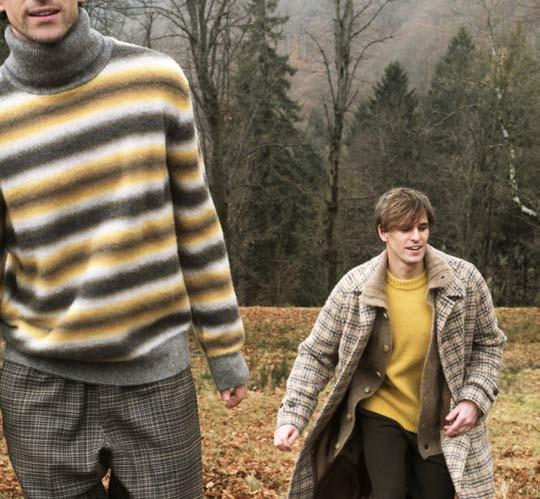
care, and artisanal sensitivity cannot be replicated artificially. Our garments, inspired by industrial design, are tested in their intended environments, ensuring both performance and style.
5
Our focus is outerwear jackets, shells, down coats, but also blazers and bikers. The Balma Ski Jacket is our most representative piece: versatile and iconic. Many customers look forward to new finishes and colors each season, wearing it both on the slopes and in the city. This confirms that Sease garments are seen as reliable and enduring companions for everyday life and extreme adventures alike.
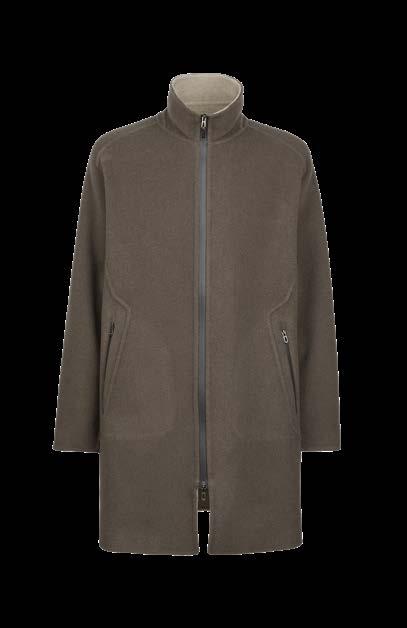
We’re pushing technological research, enhancing every fiber through tion and combination with technical materials. Soon, we’ll launch Carbon Cashmere in our Ski a project combining cashmere and technology to replicate the touch and feel of carbon fiber. Our workshop is a continuous laboratory: modern echnologies allow natural materials to achieve viously unthinkable applications, creating timeless designs meant to last companions for countless unforgettable moments in every “Seaser.”
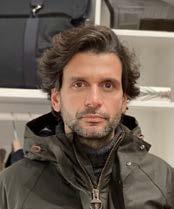
Nearly fifty years have passed since the beginning of the journey of Taddei & Co, which from Liguria brought to Milan an urban style that never betrayed its origins those rooted in quality and an obsession with detail
by Sara Fumagallo
There’s a story that begins among the waves of Liguria and lands in the beating heart of Italian fashion. It’s the story of Taddei & Co, the store founded in 1976 in Bonassola by Angelo Taddei, a man with a deep passion for clothing and everything that rhymes with elegance. At the time, the shop was dedicated primarily to the nautical world, offering garments designed for those who live the sea as a loyal companion. But in 1980 came a turning point: the store moved to Via Previati in Milan, renewing its spirit by embracing a more urban style without ever abandoning its roots. Today, that philosophy lives on through his son Michele, alongside his sister Carolina, both passionate custodians of an identity built on quality, attention to detail, and genuine listening to the client. At Taddei & Co, people don’t come looking for just a jacket or a pair of trousers they come for advice, for a proposal tailored to their way of being. “I don’t like the word trend,” Michele tells us. “Our selection comes from personal taste, not from what the market dictates.” His statement is clear: fashion fades, style remains. Inside the store, the atmosphere is at once relaxed and refined, with a range of high-quality casual garments signed by some of the most respected brands on the international scene. Brands chosen with care, all united by a single thread: a timeless yet contemporary style. Today, at the helm of the company, Michele Taddei shares the long journey of Taddei & Co a story that remains faithful to its roots while constantly looking upward, aiming to “consolidate an increasingly strong identity, maintaining that direct and personal relationship with our customers, which represents the true heritage of the company.”
Can you tell us the story of Taddei & Co?
Taddei & Co was founded in Bonassola in 1976, thanks to my father Angelo’s passion for clothing. It began as a small shop specializing in nautical wear, deeply tied to the territory and the lifestyle of the sea. In


1980, we moved to Milan and opened a new location in Via Previati, adapting our style to a more urban context while maintaining the same attention to quality and detail that has always defined us.
What is the profile of your typical customer?
Our customer is someone who enjoys dressing well and appreciates being guided in their choices. They don’t just seek a product, but also expert advice and a personalized shopping experience. Many return to us because they find consistency in both style and service two elements we consider essential.
Have you noticed any particular trends for the upcoming winter?
I don’t like to talk about trends in the strict sense. I prefer to offer a selection based on my personal taste one that combines elegance and practicality.
What are your future plans?
Looking ahead, our main goal is to continue strengthening our path growing without losing our identity. We want to further nurture our relationship with our customers, because that bond is the foundation of everything we do.
Store name: Taddei & Co
Owner: Michele Taddei
Address: Via Gaetano Previati 22, 20149 Milan Surface area: 110 m²
Website: taddeieco.it
Top-selling brands: Baracuta, Barbour, Blundstone, Briglia 1949, Filson, Gran Sasso, Hartford, Kangra, L.B.M. 1911, Manifattura Ceccarelli, Sebago, Stewart, Tela Genova, Woolrich
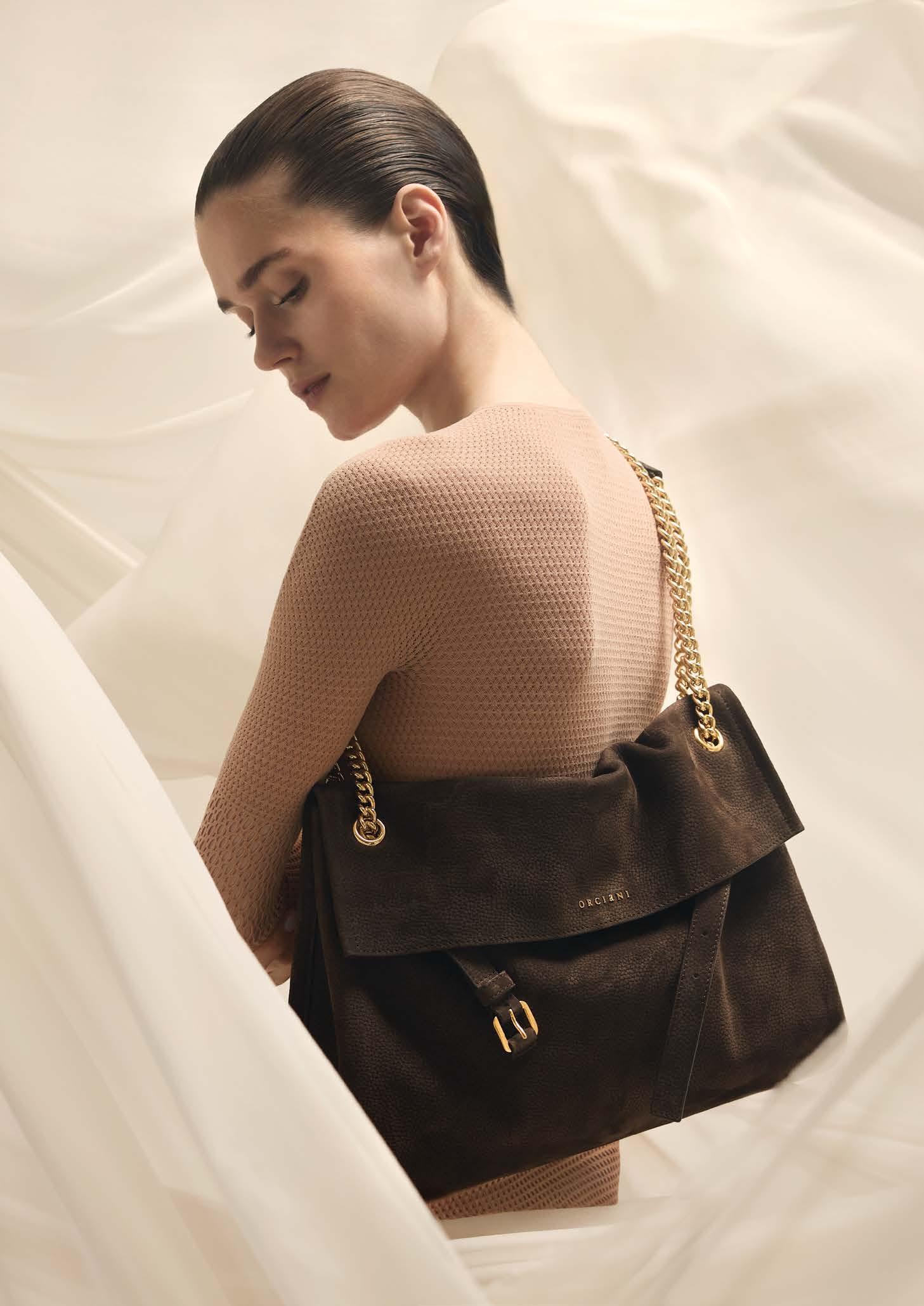

Mattia Bodini, Chief Executive Officer
From the synergy of three outstanding companies comes Bolivox, the new Master Agency that streamlines fashion and sportswear distribution, offering a unique, efficient, and comprehensive service across the entire national territory
by Sara Fumagallo
Born from the union of Wivian’s Factory, Showroom Libenzi, and Gruppo Voxa, Bolivox represents a new generation of Master Agencies in Italy’s fashion and sportswear landscape. A company that blends complementary skills, experience, and vision to offer brands a unique, efficient, and widespread service across the entire national territory. The goal is clear: to be a strategic partner for brands aiming to strengthen their presence in Italy, ensuring consistent, targeted, and coordinated distribution. With a single point of contact, Bolivox streamlines commercial management and strengthens the connection between brands and retailers, offering tailor-made solutions ranging from strategic consulting to post-sales management. We discussed this with Mattia Bodini, Chief Executive Officer of the company.
How did Bolivox come about?
Bolivox was born from an idea we had long envisioned: to bring together under one entity three established companies Wivian’s Factory, Showroom Libenzi, and Gruppo Voxa. The aim was to create a shared structure a single point of contact for brands ensuring consistent and coordinated distribution throughout the country, with one clear mission: to provide companies with an integrated, modern, and cohesive representation service, building strong and lasting relationships between brands and the market. Our vision is to become a benchmark partner for leading fashion and sportswear companies, offering nationwide coverage that is both extensive and perfectly coordinated.
Hoff, Inuikii, Palm Angels, Reebok, Rue Madam Paris, The North Face, Umbro, Vans BRANDS
Where does the name “Bolivox” come from? What does it mean?
“Bolivox” derives from the fusion of the three founding entities: Bo (Bodini), Li (Libenzi), and Vox (Voxa). The name encapsulates the identity of the three founding partners: Bodini (Wivian’s Factory), overseeing Northern Italy and Sardinia; Libenzi, managing Central Italy from its base near Bologna; and Gruppo Voxa, the reference point for Southern Italy with offices in Rome, Naples, Palermo, and Bari.
Which brands do you currently represent, and what are the latest additions?
Today, Bolivox represents a rapidly expanding portfolio of brands. Among the most prominent names are Umbro, Reebok, and Palm Angels, which have chosen the company as their exclusive partner for Italy. Following its sale and new European management entrusted to Slam Jam, Reebok appointed us as its Master Agency for Italy. Likewise, Palm Angels, now part of Sportlux Swiss S.A., has also chosen to collaborate with us. These partnerships make us particularly proud. A new brand will soon join our portfolio but for now, it remains top secret.
What are Bolivox’s goals and challenges for the coming year?
Our goals for next year are ambitious: to expand our brand portfolio, strengthen our Master Agency services, and enhance our operational structure with professionals dedicated exclusively to the company. Bolivox today is a solid and tangible reality a union of Italian excellence that has chosen to join forces to offer a new, one-of-a-kind service. It’s a model that is already attracting interest from international companies, encouraging us to look ahead with great confidence and determination.

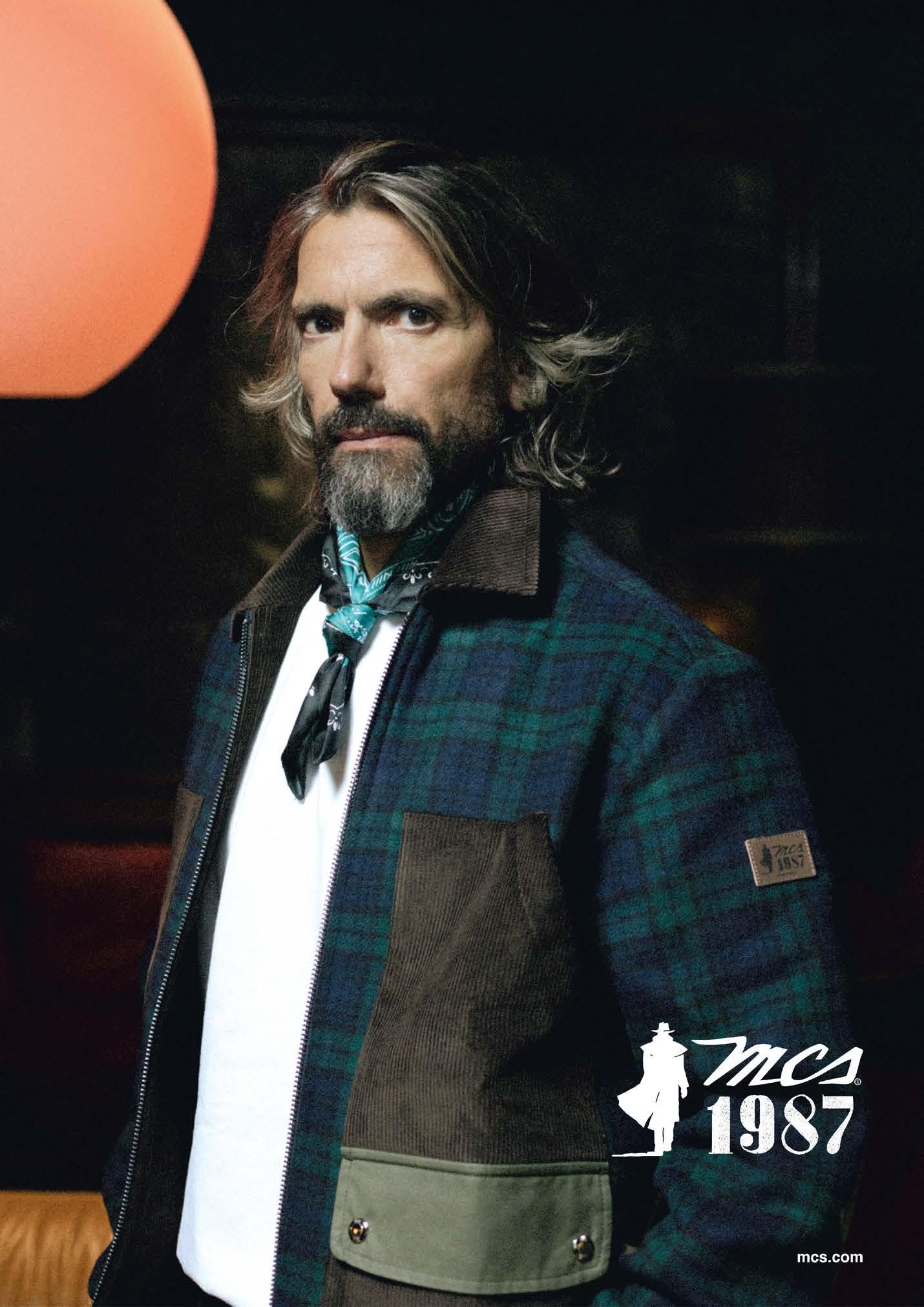
From the Venice Sustainable Fashion Forum 2025 begins the challenge to harmonize values, regulations, and processes along the entire fashion chain. Between evolution and circularity
by Angelo Ruggeri
Among the quiet waters of San Giorgio Island, European fashion has found its new point of balance. It was here that the fourth edition of the Venice Sustainable Fashion Forum (VSFF) opened an event conceived by Confindustria Moda, The European House Ambrosetti, and Confindustria Veneto Est shining a light on a crucial challenge: how to harmonize rules, values, and processes across the entire extended fashion supply chain. Italy reaffirms its role as the European hub of sustainable transition, in a global context marked by geopolitical instability, economic tensions, and shifting consumption models.
“Just Fashion Transition”: when fashion truly changes
During the event, Carlo Cici, Partner and Head of Sustainability Practices at The European House – Ambrosetti, presented the strategic study “Just Fashion Transition 2025.” The study proposes a practical and realistic approach: sustainability must be actionable, built on concrete solutions, and told through authentic narratives. No more abstract visions or idealized theories but a just transition, where ethics and competitiveness can coexist. A new way of understanding fashion, capable of balancing short-term margins with long-term growth.
A new geopolitical grammar
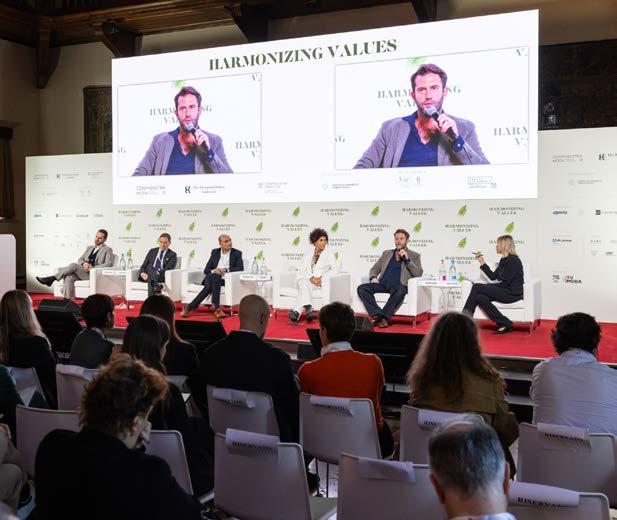
Sustainability has become a matter of industrial strategy and economic security. Amid this “new geopolitical grammar,” Europe aims to build a model of green capitalism, where the protection of ecosystems is an essential part of competitiveness. Yet, the pressure of ultra-fast fashion models continues to erode both quality and rights. Only a balance between innovation and values can ensure the resilience of the European fashion system.
An industry in transformation
Fashion across the Old Continent is shedding its skin. While business fragmentation and labor productivity are on the rise, nearly 300,000 jobs remain at risk. The challenge lies in innovating without dehumanizing, preserving the craftsmanship that made Made in Italy renowned worldwide. Meanwhile, the storytelling landscape is shifting: “producer” countries such as China are emerging as leaders in innovation, while “brand-of-origin” nations must redefine their identity, turning sustainability into a new form of beauty and desire.
Consumers between anxiety and desire
Consumer behavior is changing, too. The phenomenon of “doom spending” is growing the tendency to spend on luxury goods to counterbalance anxiety and uncertainty. Younger generations now purchase not just for status, but to restore emotional stability. Yet navigating the green label universe remains difficult. Information fatigue is real: everyone talks about sustainability, but few make it clear and verifiable. Fashion must return to a simple, transparent, and authentic language.
The EU Competitiveness Compass, designed to simplify regulation, has paradoxically slowed down more than half of sustainability directives. However, Europe remains a leader in financial incentives for the transition. The challenge lies in access: Italian SMEs the backbone of the sector still struggle to obtain the necessary funding and support tools. After a stagnant 2024, 2025 marks a recovery though driven more by compliance than by conviction.
Circularity and clean tech: the twin keys to the future European fashion is advancing toward circularity but not fast enough. In just twenty years, global fiber production has more than doubled, while Europeans now buy 60% more clothing than in 2000 and wear it for half as long. Nearly 7 million tons of textile waste end up in mixed waste each year. The answer cannot be only to recycle more, but to consume better. Clean technologies for fashion are ready but still costly. According to the study, an additional €4.4 billion in investments will be needed by 2030 to meet climate targets. Here, sustainable finance becomes the sector’s strategic ally the only way to turn the transition into a real opportunity.
From the Venice Sustainable Fashion Forum 2025 emerges one clear message: sustainability is no longer a trend it is the new grammar of competitiveness. To harmonize rules, values, and processes means to build a balance between ethics and business, innovation and tradition, people and the planet. In Venice, fashion looked at itself in the mirror and recognized its greatest challenge: to be green without losing allure, just without becoming austere, innovative without betraying its roots. Here begins the true “Just Fashion Transition” the promise that beauty can once again become an act of responsibility.
A moment from the Venice Sustainable Fashion Forum 2025

Preparati ad un nuovo modo di fare trekking con speedARC Matis
Eighty years, eight models, a new chapter. Paraboot celebrates the milestone of the legendary Michael with an exclusive event at Milan’s Candiani Store. A universal classic, loved across generations and cultures
by Cristiano Zanni and Sara Fumagallo

Some stories are written with footsteps. Year after year, tread after tread, they become engraved in the collective memory. Sometimes they are born of necessity, to accompany the daily lives of people at work. Sometimes they become style symbols, objects of desire, icons that cross decades without losing an ounce of their identity. Paraboot’s Michael belongs to that timeless elite. The French brand’s most beloved shoe turns 80 and wears the age with the assuredness of one that does not chase trends. To honor this legendary journey, the label chose Milan the fashion capital and entrusted the Candiani Store in Piazza Mentana 3 with the stage for a special event titled evocatively: “Some Things Never Change.” The celebratory cocktail staged conversations of style between tradition and modernity, archive and innovation.


The engineer’s shoe
It was 1945 when the Michael first appeared: a robust, functional shoe designed for farmers, artisans, and shopkeepers. In Italy it quickly became known as “the engineer’s shoe,” earning a reputation for unshakeable reliability. Its rounded silhouette, the scalloped trépointe, and the tank-tread sole still speak to the same philosophy: to endure and to accompany the wearer with unadorned elegance. The Norwegian and Goodyear constructions, the possibility of full resoling, and the obsessive attention to materials and details testify to Paraboot’s dedication to true craftsmanship. In time the Michael learned to change without changing to reinvent itself while remaining itself. From the countryside to the catwalks, from the workshop to the urban lifestyle, that transition felt natural. A universal classic, cherished by generations and by diverse cultures.
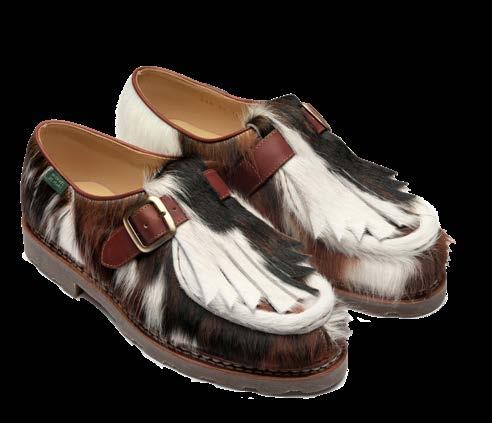

“FATTORE K HAS BEEN DISTRIBUTING PARABOOT IN ITALY FOR 17 YEARS. IN 2018, THE COMPANY’S TOTAL TURNOVER WAS €17 MILLION, WHILE TODAY IT HAS REACHED €30 MILLION. WITHIN THE NEXT FOUR YEARS, WE EXPECT TO REACH €50 MILLION. ITALY IS NOW THE SECOND-LARGEST MARKET AFTER FRANCE”, GIANNI KLEMERA, FOUNDER E CEO FATTORE K
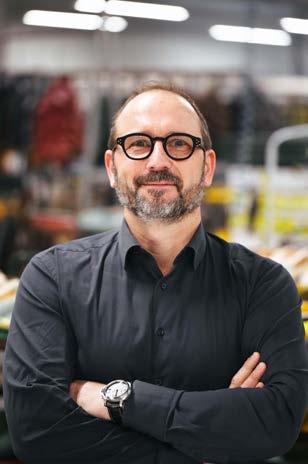
80
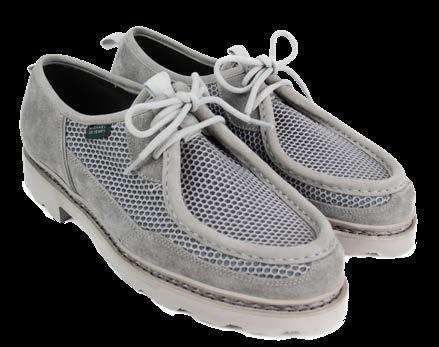

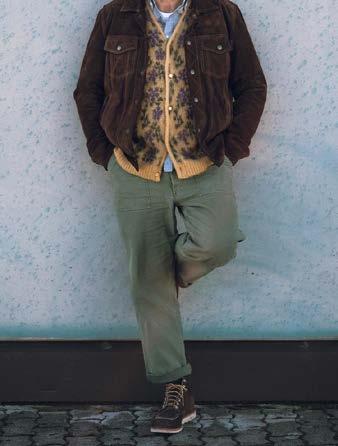
“SIX YEARS AGO, I JOINED PARABOOT AS CEO. IT WAS A FAMILY-RUN COMPANY, VERY PRODUCTION ORIENTED TRADITIONAL, AND ALMOST ENTIRELY LACKING IN BRANDING, MARKETING, IMAGE, AND INTERNATIONAL OPENNESS. FOR EXAMPLE, WHEN I ARRIVED, 70% OF SALES CAME FROM FRANCE AND JAPAN, WHILE ITALY ACCOUNTED FOR ONLY 5–7%. I KNEW WE HAD TO OPEN THE COMPANY TO INTERNATIONAL MARKETS, ESPECIALLY TO ITALY ONE OF THE FOUR TRUE FASHION CAPITALS OF THE WORLD, ALONGSIDE FRANCE, JAPAN, AND NEW YORK”, ERIC FORESTIER, CEO PARABOOT

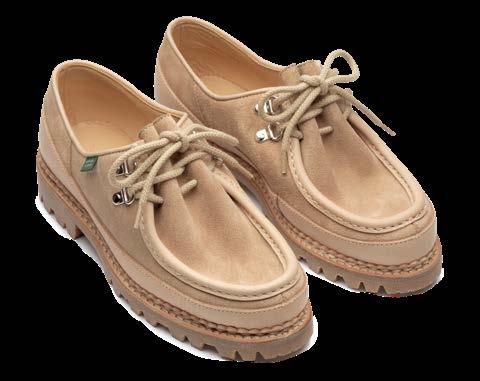
When the Luxury Ecosystem Shifts Agility: From the Industrial Revolution of Kering’s New CEO (from the automotive world) to the Armani Legacy, Balancing Between Foundation and Incoming Fund
di Angelo Ruggeri

When in June 2025 Luca de Meo, former CEO of Renault, was announced as the new CEO of the Kering Group, many thought it would mark a true revolution.
An automotive executive at the helm of Gucci, Bottega Veneta, Saint Laurent? Yet François-Henri Pinault’s choice was anything but random. The fashion world is changing its skin: less aesthetics, more engineering; less inspiration, more management. De Meo arrives at Kering with a clear philosophy, forged in automotive plants: performance, efficiency, and organization. Throughout his career, he has led complex restructurings, redesigned supply chains, and revitalized struggling brands. Essentially, he is a man who knows how to “turbocharge” what has stalled. And the luxury giant needs it: profits have fallen, Gucci seems to have lost its shine, and the group has suffered from creative stagnation. His first move was both symbolic and crucial: Pinault remains chairman but relinquishes operational control. For the first time, Kering separates strategic power from executive management, adopting a leaner and more pragmatic structure. It marks the end of the “father-master” era and the beginning of a more collective management style, where numbers matter as much as collections. In his first weeks, de Meo gathered the group’s leadership, imposing a new pace: 65-
hour work weeks, direct meetings via WhatsApp, flat hierarchies, and no excuses. Mistakes are admitted, successes are shared. It is a code of conduct borrowed from the automotive world, where speed is measured in decisions, not words. The challenge is to make a system run that, between runways and marketing, had become accustomed to slower rhythms. The plan is clear: reignite Gucci, restore efficiency, and rebuild margins. Above all, redefine Kering as an industrial group with a creative heart. Francesca Bellettini, now CEO of Gucci, will be the first to test this new philosophy: more accountability, less mysticism. “Luxury is a system,” de Meo would say and he knows systems well.
The Armani Succession: Independence as the Ultimate Legacy
While Kering races toward transformation, Armani looks to the future with a form of controlled stability. After Giorgio Armani’s passing on September 4, the Milanese fashion house entered the most delicate phase of its history: a future without its founder. But, as always, the designer had planned everything. His will, published in mid-September, revealed an almost surgical governance structure. The Giorgio Armani Foundation becomes the owner of the entire group: 9.9% in full ownership and the remaining 90% in bare
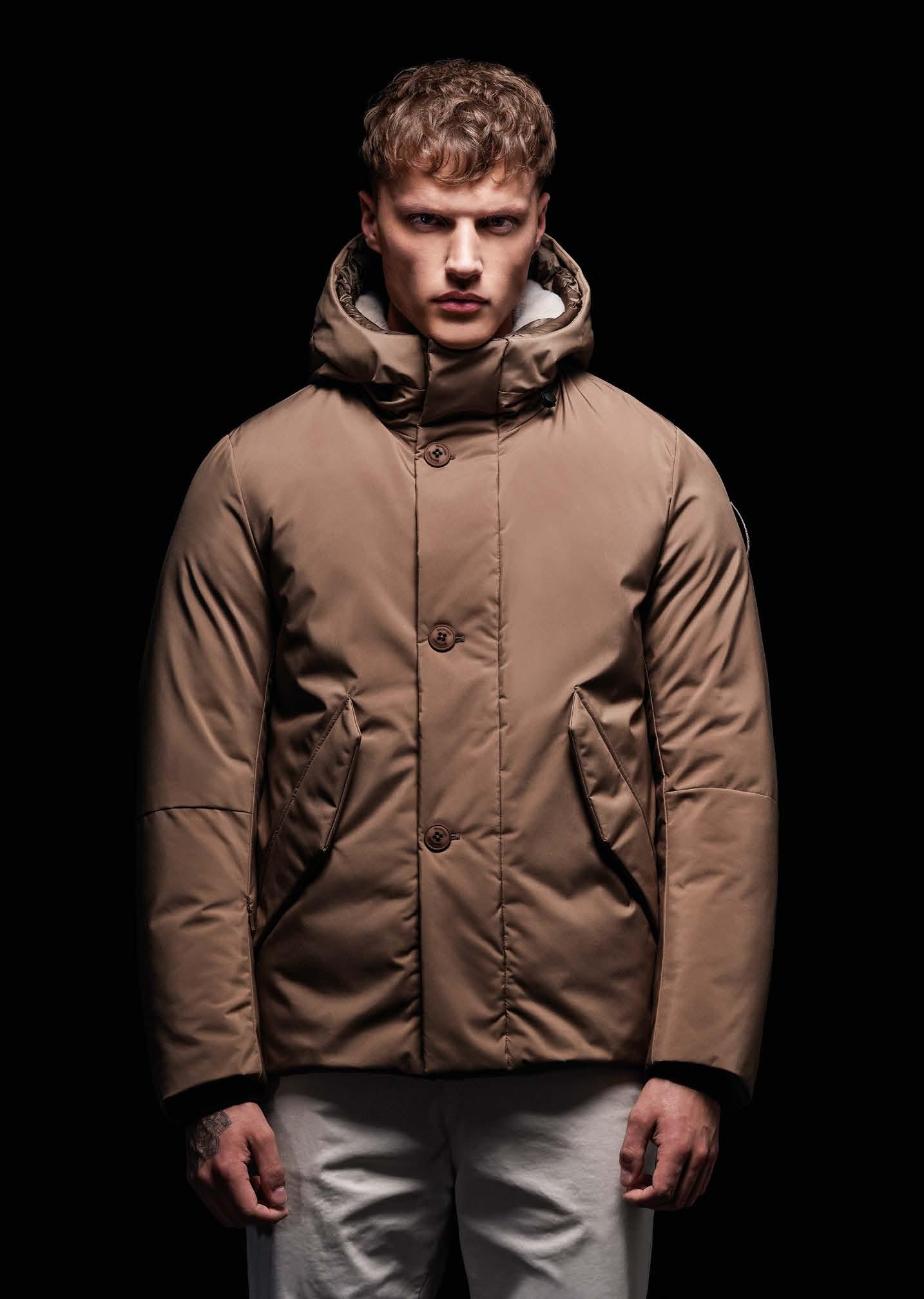

ownership. Usufruct, distributed among trusted figures, ensures short-term continuity. The Foundation is tasked with safeguarding the brand’s spirit while also opening it to the outside world. Within 18 months, it must cede 15% of the shares to a major luxury player among the names mentioned are LVMH, L’Oréal, or EssilorLuxottica. Not a speculative fund, but an equal partner. Over the following five years, a second opening may occur, up to 55% of the capital, or even a stock market listing. All of this, however, under a non-negotiable principle: the Foundation will retain at least 30.1% and veto power over any crucial decision. It is a masterpiece of posthumous strategy: Giorgio Armani did not leave a void, but a roadmap. He built a legal shield that prevents hostile takeovers while still allowing growth with external capital. Independence as value, not isolation. Operational leadership remains with Pantaleo Dell’Orco, longtime right-hand man and companion of the designer, also appointed president of the Foundation. He embodies continuity: he knows the Armani language but will have to engage with a very different financial world. Armani’s grandchildren, Silvana Armani and Andrea Camerana, sit on the board with minority shares and more symbolic roles. The family era closes, making way for institutional governance. Yet the shadow of capital looms. LVMH watches, Luxottica waits, L’Oréal smiles. Whoever takes the 15% stake will have a foot in the temple of Milanese minimalism. A small but strategic share: enough to influence alliances, distribution, and access to the Asian market. Luxury becomes a prize again, even if in the form of controlled collaboration.
When the Engine Meets Couture
The parallel between Kering and Armani is no coin-
cidence: they represent the two souls of new fashion management. On one side, industrial drive; on the other, heritage protection. Two opposite strategies, but born from the same urgency: reinventing how fashion is managed. De Meo brings to luxury the mindset of the automotive industry discipline, processes, lean thinking. Armani leaves behind the opposite model: reflection, symbolic value, control. Both, however, understand that the era of “romantic” fashion is over. Today, brands are infrastructures: they require governance, foundations, financial systems, and, above all, rules. Kering’s new CEO emphasizes speed and business culture, transforming inspiration into efficiency. The Armani Foundation, meanwhile, seeks to slow down, protecting identity before margins. Two different ways to answer the same question: how to remain relevant in a market where luxury is now an industrial, not an artistic, category.
Luxury as a Dual-Soul Machine
The future of fashion is played out between two extremes. On one side, de Meo’s “engine” approach, where beauty is also measured in processes and innovation is no longer just aesthetic. On the other, the Armani legacy, which turns succession into a manifesto of brand freedom. In between is a system redefining itself, oscillating between the cult of creativity and the need to function as a global enterprise. This is the new fashion management: no longer the realm of brilliant designers, but the era of managers fluent in both art and finance. Today, luxury is a dual-soul machine elegant and complex, industrial and poetic, autonomous and connected. De Meo and Armani, each in their own way, symbolize it: one accelerates, the other moves at a measured pace. But both remind us that, to survive in the present, even beauty must learn to drive.

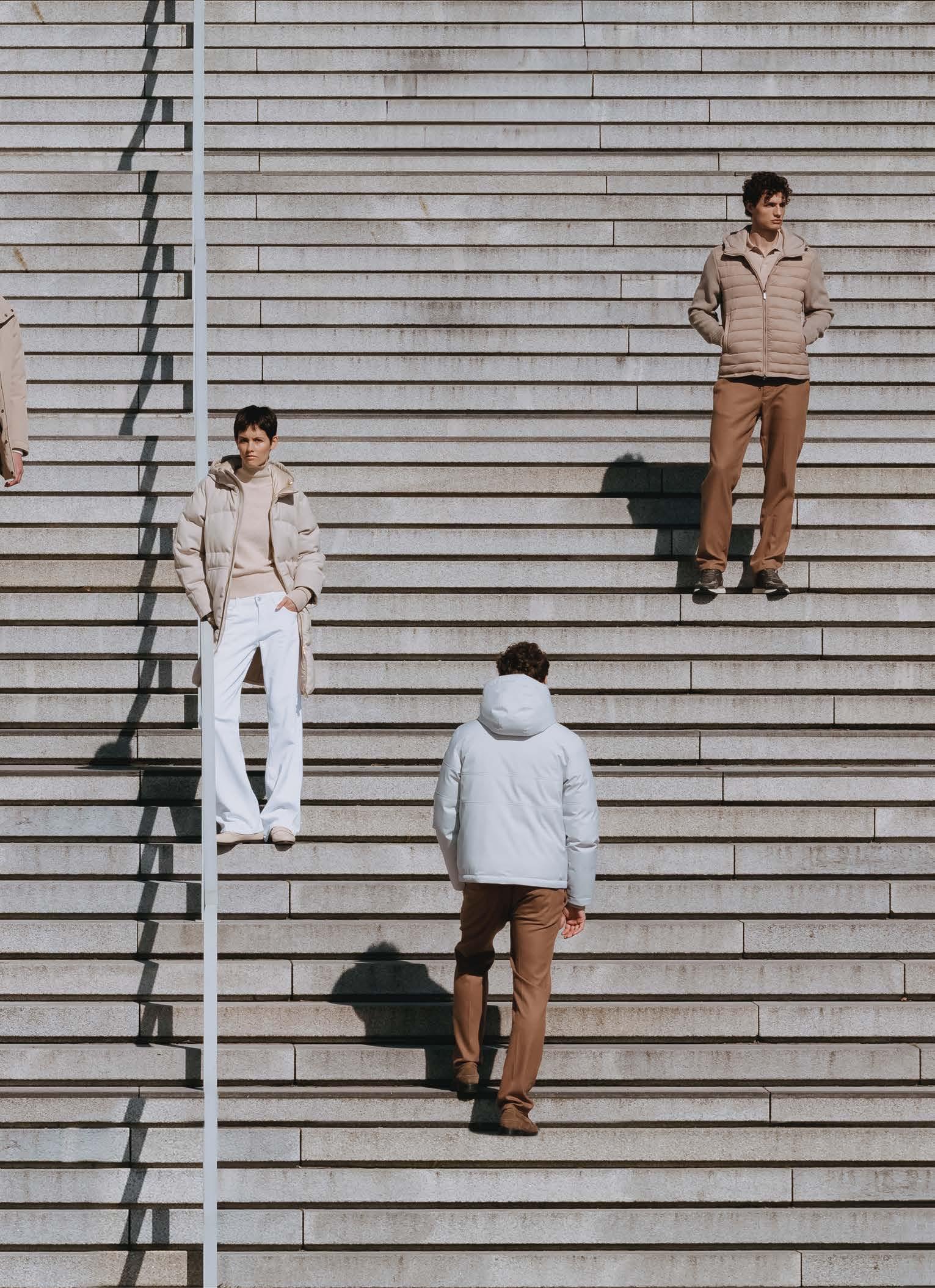
Revival or decline? The analysis presented during the “FashionForward” Conference paints a picture of a market that is far from rosy, yet still central at the national level. The key will be the sector’s ability to innovate and regain its role as a driver of desire
by Cristiano Zanni
The multi-brand retail sector for clothing in Italy is going through a crucial phase, where signals of structural fragility intertwine with new opportunities for revival. This was the main theme of the “Fashion Forward” Conference – for which HUB Style acted as media partner, moderating the panels – held at the historic headquarters of Assomoda-Confcommercio. “I am very pleased that, for the first time, both institutions and representatives of the various associations sat around the same table to try to intervene and solve the problems of our sector,” said Giulio Felloni, President of Federazione Moda Italia-Confcommercio. During the morning session, speakers included Marco Barbieri, Secretary General of Confcommercio Imprese per l’Italia; Carlo Massoletti, Vice President of Confcommercio Lombardia; Luca Sburlati, President of Confindustria Moda; Carlo Capasa, President of Camera Nazionale della Moda; Maurizio Governa, President of Assomoda; and Giulio Felloni.
A still extensive, but more fragile network Census data indicate over 39,000 active multi-brand stores in Italy, with strong concentration in the northern regions, particularly Lombardy, Veneto, and Emilia-Romagna, but with a progressive rebalancing toward the South and high-traffic tourist areas. Store density is higher in metropolitan and urban areas, while smaller towns show a progressively weakening retail fabric. In terms of business dynamics, closures consistently exceed openings: “In 2024, 18 fashion stores closed every day, totaling 6,459 in a year, and household spending on clothing and accessories has dropped by nearly 4 billion euros over the past five years. Today is an opportunity to renew our commitment to building a better future for Italian fashion,” says Felloni. The first half of 2025 shows a fashion market value of €12.1 billion, declining mainly in accessories and hosiery; clothing remains the dominant segment. Demand appears influenced by growing attention to promotions and discount periods, a tendency to purchase only what is necessary, and a reduction in the
emotional value attributed to fashion. Price remains the main lever, making fashion products almost a commodity. “Everyone is protecting themselves: we must do the same. We monitor how information is presented and prohibit misleading advertising. These are rules we can enforce nationally, as is already being done in other countries. If we don’t act quickly, thousands of stores will disappear, and our cities will lose identity, culture, and quality,” declares Sburlati.
Green fashion? Yes, but at zero cost
After an initial peak, demand for sustainable products has waned, as prices must not exceed those of traditional garments and clear certifications guaranteeing the product’s real sustainability are lacking. Over 49% of Italians purchase second-hand clothing, but the dominant motivation remains saving money rather than environmental concern. “There is a new and aggressive competition: ultra-fast fashion. A model that relies on practices we cannot accept. If France has already introduced regulations on these players, Italy must also have the courage to intervene. We cannot protect Made in Italy only formally and then allow our markets to be flooded with products that disrespect both people and the environment,” says Capasa. Retailers that have managed to stand out in this scenario are those in the premium segment.
Changing purchasing behaviors
Many SMEs no longer use traditional e-commerce, preferring social commerce and marketplaces, which are lower-cost tools that offer more immediate customer interaction. Foot traffic decreases in almost all physical locations, except for outlets, which remain resilient thanks to price leverage. Online maintains a flat trend but gains share of the total market. Regarding consumers, Millennials represent the potential target for volume and spending, followed by Gen X. Although many consumers continue to prioritize quantity and price, there is a renewed interest in quality, durability, and craftsmanship, especially in the premium segment.
Read the interview with Maurizio Governa, President of Assomoda, in issue 05-25 and online at hubstyle.it
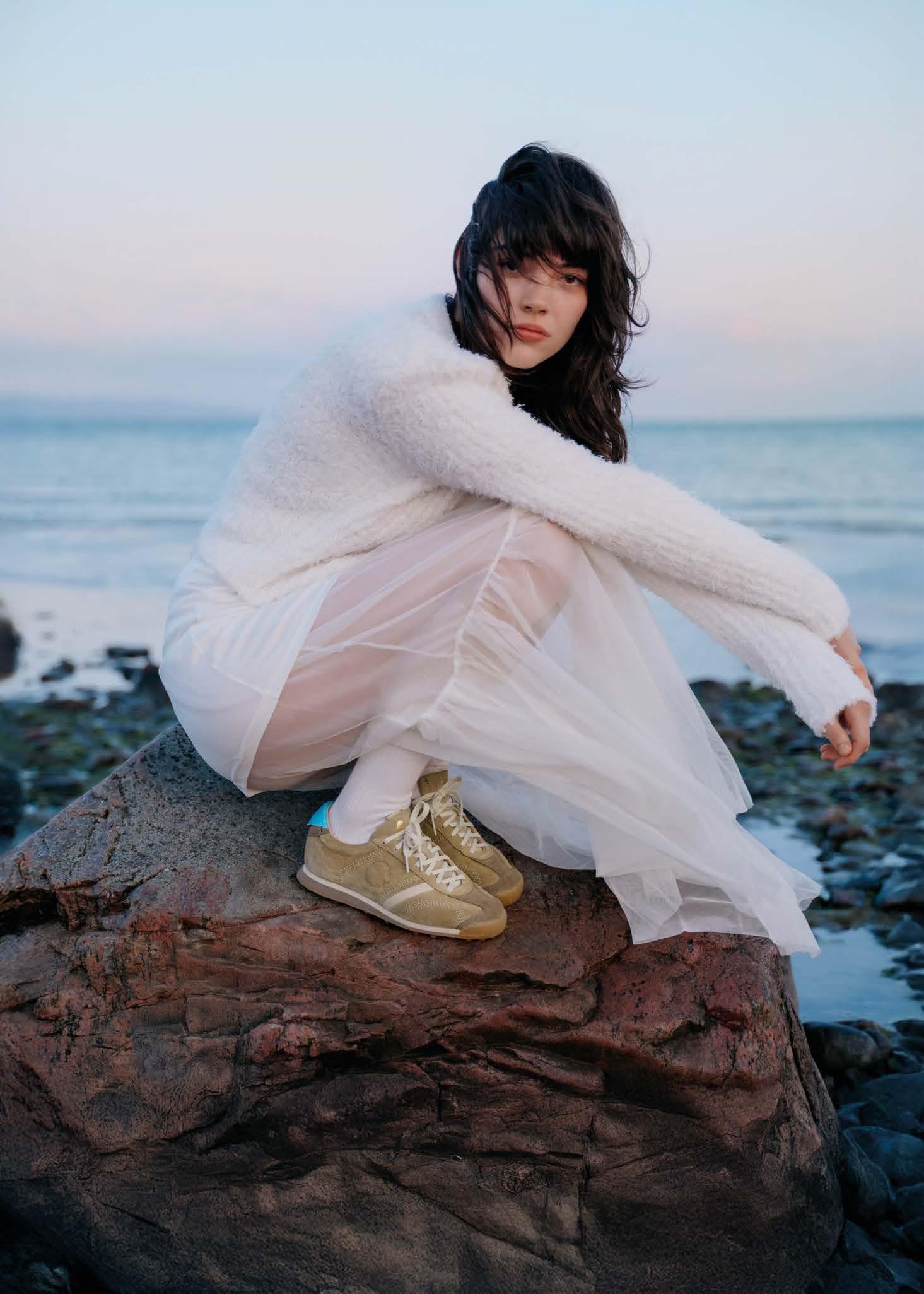
Stardust è un progetto nato dall’idea che siamo parte dell’universo. Stardust ci connette: tra di noi, con il nostro passato, il nostro presente. Con gli individui e con Madre Natura. Ad ogni passo, un promemoria:
We are always connected
For FW 25/26, Tagliatore celebrates outerwear with contemporary volumes and precious raw materials. Pino Lerario tells us how the brand combines sartorial tradition with modernity
by Valeria Oneto
Tagliatore continues to tell the story of masculine and feminine elegance through refined outerwear, where every detail from fabric to silhouettereflects the brand’s Italian heritage. The men’s and women’s collections speak a common language: clean cuts, carefully studied volumes, and sartorial details create a coherent stylistic universe. The harmony between the two lines enhances the brand’s unique identity and timeless elegance. In this interview, Pino Lerario, the brand’s creative director, reveals the secrets of the FW 25/26 collection, from tailoring choices and noble materials to a timeless aesthetic that combines comfort, lightness, and style.


simply changing the size of a lapel or the length of a jacket can produce a completely different result. Our volumes are soft but never excessive; proportion is a mantra for us. Our aesthetic is harmonious and well-defined: we aim to support refined dressing, where every choice, even the smallest, contributes to building a precise visual narrative. I think, for example, of the importance of buttons, which in Tagliatore collections become true distinguishing elements.
Winter collections reflect a balance between heritage and innovation. How does this season’s outerwear embody the brand’s values, and what message do you want to convey to your contemporary clients?
FW 25/26 celebrates outerwear with noble and precious materials such as cashmere, wool, mohair, and Vicuña. How do these fibers guide the tailoring choices of your outerwear and contribute to creating lightness, comfort, and a perceptible elegance even in the details?
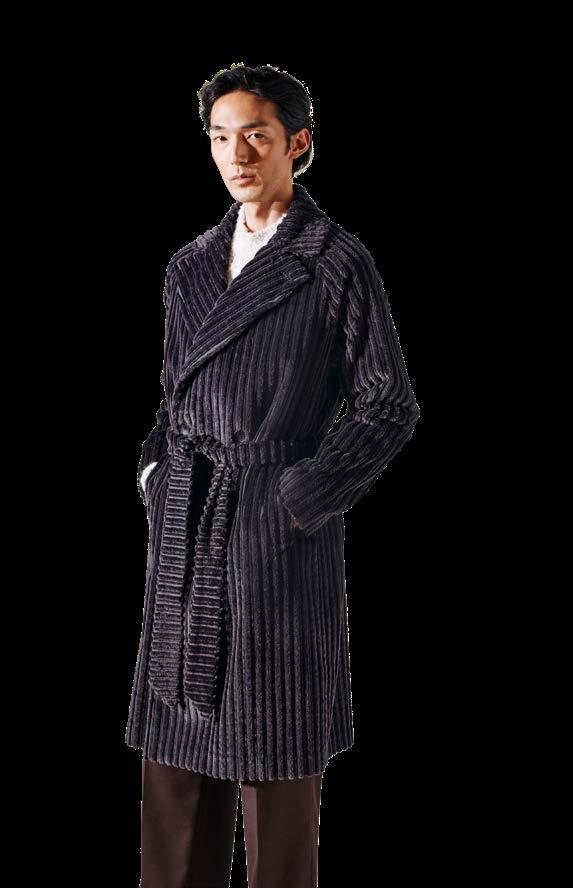
The choice of raw materials is central to building a collection: quality excellence is for us an indispensable calling card. Emotion is also conveyed through touch: it’s not just the visual aspect that must be satisfying. I personally oversee the selection of fabrics and work side by side with our suppliers, aiming to achieve something truly unique and exclusive. If I have a precise vision for a coat or jacket, the research doesn’t stop until I find exactly what satisfies me.
Oversized coats, jackets, and overshirts reinterpret leisure tailoring with contemporary volumes and shapes. How have you managed to combine sartorial tradition and modernity in the season’s silhouettes?
Our goal is to stay true to our origins and DNA. We don’t follow ephemeral trends, but we are aware of the importance of evolving and responding to the needs of a market and clients who are increasingly discerning. Both in the men’s and women’s collections, timeless pieces coexist items that have accompanied us for years and continue to be loved: they are a sign of consistency that renews over time.
Details such as the Mandarin collar, oversized volumes, and classic textures convey a precise idea of masculine elegance. How does the design of your outerwear from buttons to fabric treatments express Tagliatore’s distinctive style and Made in
Details are always decisive within a collection:
This season’s outerwear fully represents Tagliatore’s philosophy: understated elegance, obsessive attention to detail, and a constant search for balance between form and substance. We wanted to create garments that speak of authenticity, that convey the pleasure of wearing something well-made and feeling the quality on the skin. The message is one of conscious elegance, which doesn’t follow trends but moves through them, remaining faithful to our original values while embracing a natural evolution.

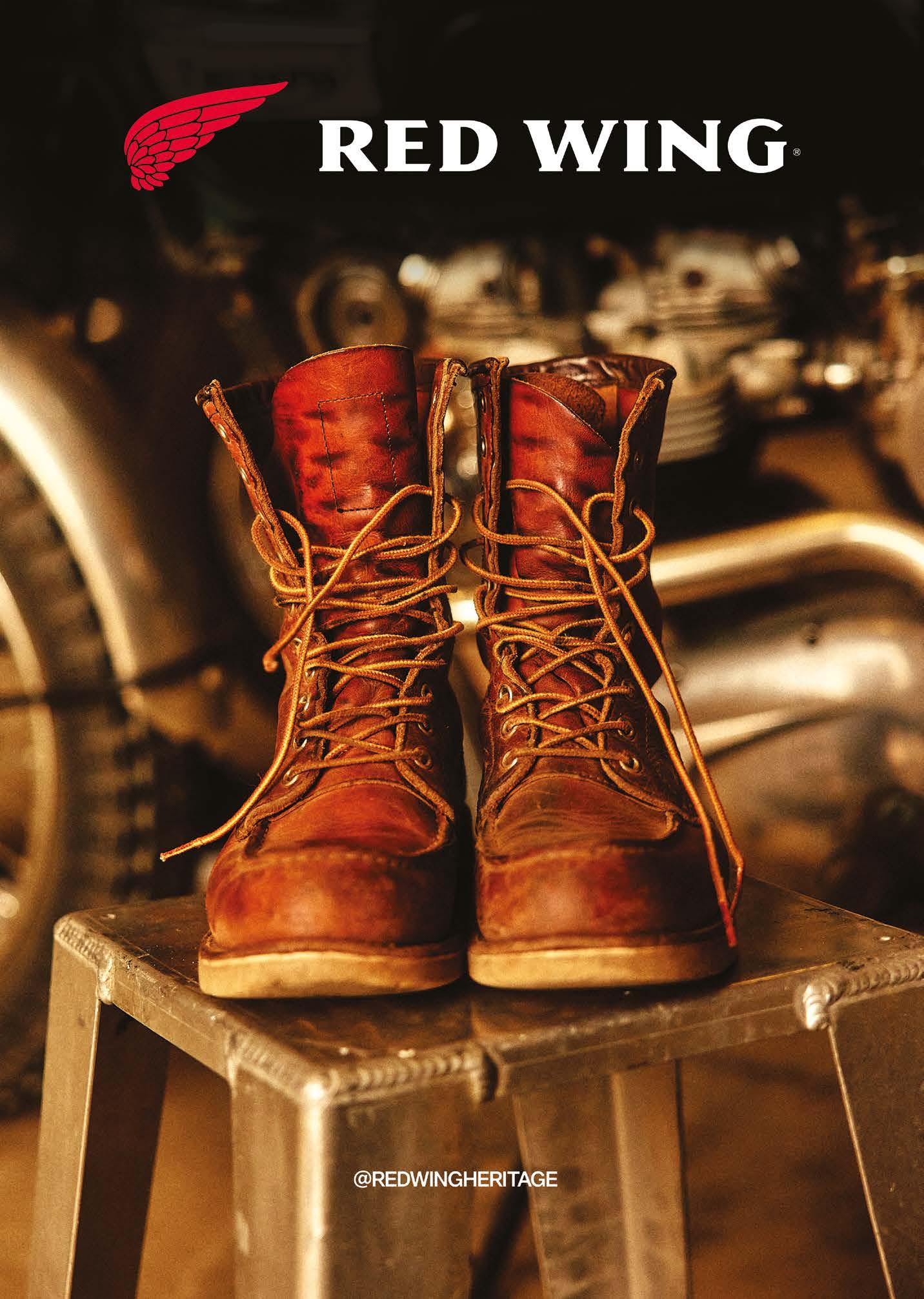
Through noble materials, technical research, and tailoring-inspired lines, DUNO continues to redefine the idea of contemporary outerwear
by Valeria Oneto
The new winter collections from DUNO, for men and women, play with diverse textures and materials: from boiled wool and bouclé to technical diagonal wool, from cashmere to luxurious wool-viscose blends, up to water-resistant nylon, matte microfibers, and bio-based membranes. A perfect balance between tradition and innovation, where noble materials meet tailored finishes and cutting-edge functional details. The Tuscany-based brand thus proposes a new idea of everyday elegance, based on comfort, performance, and urban refinement. We asked ceo Chris Wang to tell us about the evolution of outerwear and the brand’s vision for the next season.


The most iconic pieces of the season seem to reinterpret the concept of comfort, as in the Diana down jacket, which combines the softness of cashmere with Rain System treatment. How important is the dialogue between classic aesthetics and functional innovation?
These values have been central to our DNA since the brand’s inception. DUNO is the meeting point between contemporary classic aesthetics and functional innovation, a combination that defines our identity.
From the men’s Orlando jacket to the Jasper coat, up to the new women’s Diana down jacket, in Loro Piana wool and cashmere, from the ATTIC project: who is this new generation of outerwear aimed at, combining tailoring, thermal protection, and urban spirit?
Our outerwear is designed for dynamic, global citizens seeking high-quality pieces with contemporary style and advanced functionality.
Your pieces combine traditional materials and next-generation technical fabrics, water- and wind-resistant, the result of exclusive treatments. How do you select fibers and collaborations with prestigious textile companies like Loro Piana?
We are always looking for suppliers who can meet our high standards of quality. Each season, we aim to offer outerwear that perfectly balances value, performance, and material refinement.
DUNO has built a distinctive language of clean lines, neutral tones, and calibrated volumes. For the upcoming FallWinter 26/27 collection, which you will present at Pitti 109, should we expect continuity in this direction?
In the new winter collections, which we will preview at Pitti 109, there will be evolution not only in fabrics and color palettes, but also in the overall style. We maintain our identity while introducing new perspectives.
Your urban refinement has always interpreted an idea of functional elegance. How does it renew itself today, in an era of awareness and demand for long-lasting pieces, while remaining true to its identity?
This style evolves through the use of premium fabrics, attention to detail, and flawless finishes. The result is versatile pieces, suitable for every occasion, which always maintain style, functionality, and metropolitan elegance.

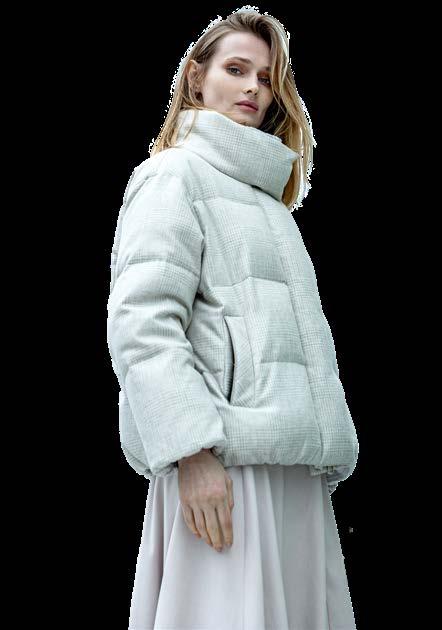

Waxed is the new project by Space 2000 that redefines contemporary heritage
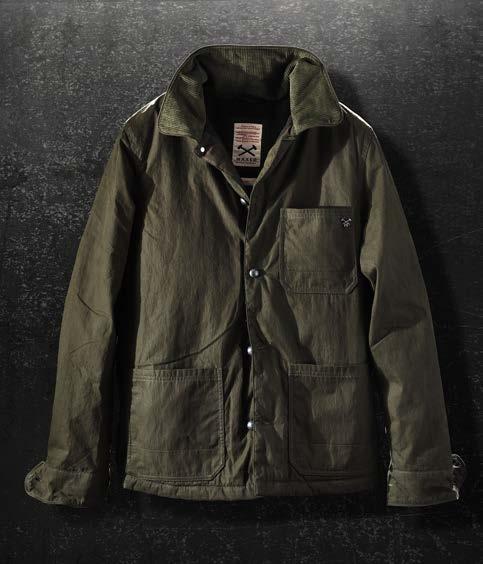
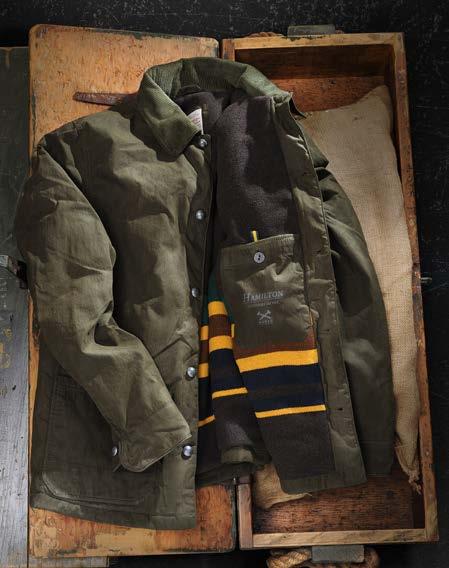
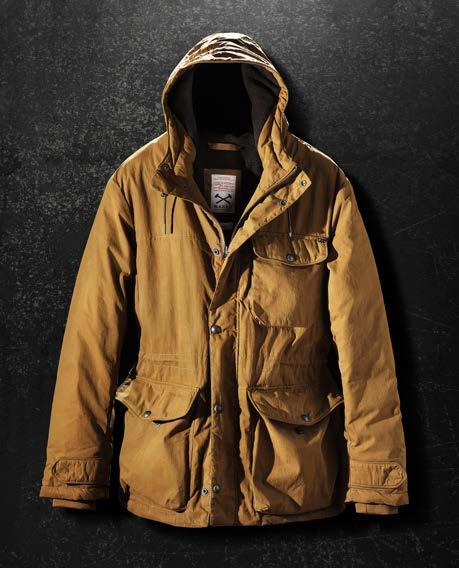
There’s a new name to watch in the Italian outerwear scene: Waxed. The project, created by Space 2000 a Made in Italy fashion company with a portfolio of 10 active brands presents a clear vision: combining industrial solidity with stylistic research. The brand was born with a precise goal: to create an exclusive and authentic label, aimed at a selected sales network and clients seeking garments with strong character and uncompromising quality. It’s an initiative that speaks of identity, quality, and coherence three key words that translate into an aesthetic as essential as it is distinctive. Each piece is a manifesto of design and durability, the result of a clear and consistent vision.
Tough and timeless
The Waxed collection is a sophisticated reinterpretation of heritage codes, revisited through a modern lens. Classic shapes and traditional volumes are renewed with functional cuts, technical materials, and next-generation comfort. The result is a unique balance between authenticity and innovation, a “tough and timeless” aesthetic that evolves over time with the wearer. At the heart of the project is outerwear: jackets and parkas made of cotton/ nylon with a special waxed finish, from which the brand takes its name. A durable, lively material, capable of changing with use and telling the story of its wearer.
Two icons, one attitude
Among the signature pieces of the first collection, two models stand out as embodiments of the brand’s spirit: the Burnaby Parka, a contemporary reinterpretation of a classic with clean lines, technical details, and versatility; and the Hamilton Chore Jacket, inspired by the traditional work jacket, lightened in proportions and designed as the ideal mid season jacket. Both models feature a multicolor striped lining a folk inspired touch that breaks convention and becomes a distinctive signature of the collection.


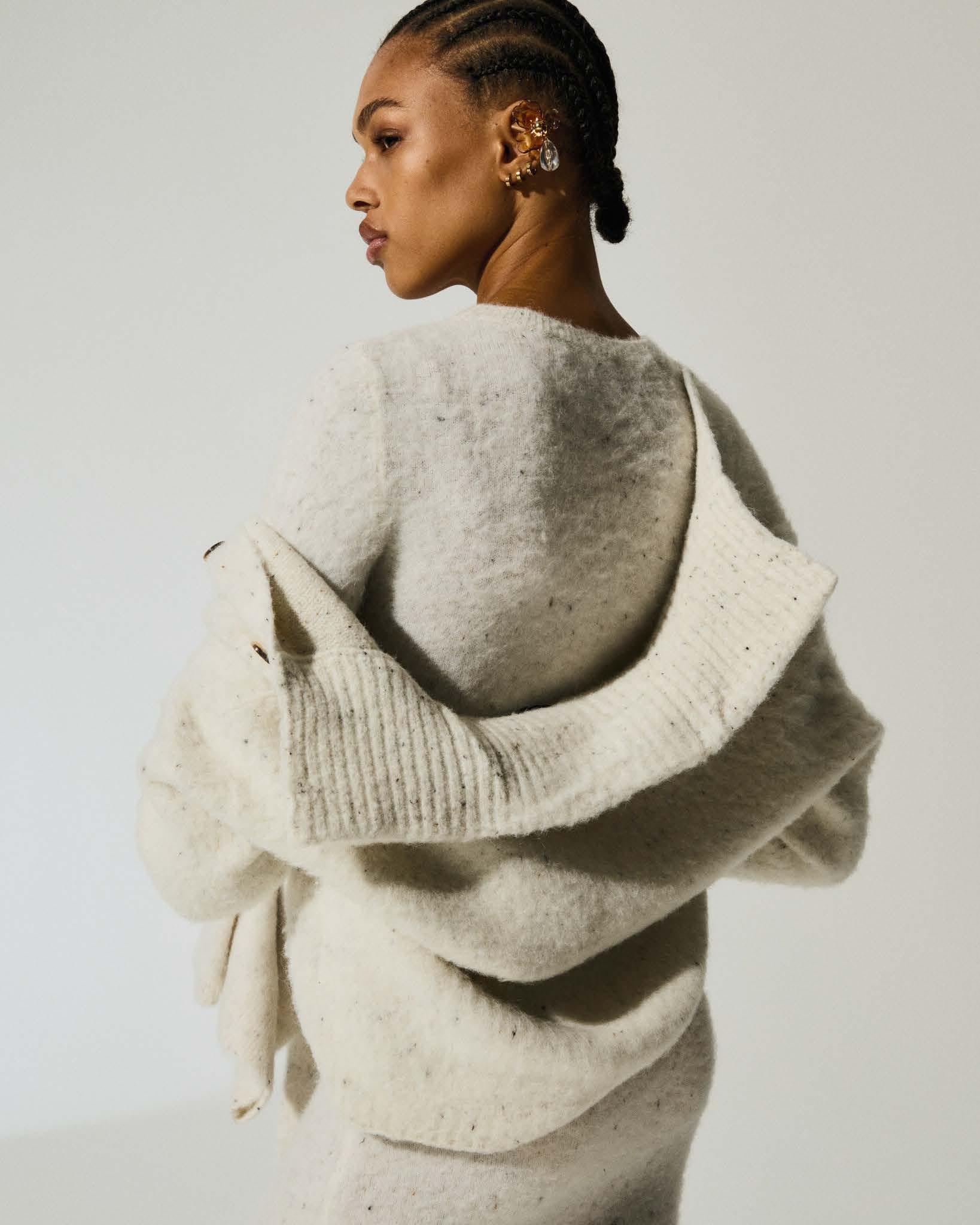
For seven years, Acqua Foundation has brought together art, design, and philanthropy to protect our most essential and fragile resource. The 2025 edition of Imaginarium IV explored the role of creative industries in combating greenwashing
by Valeria Oneto
From the initiative of the four co-founders Gabriele Bonfiglioli, Aurelia Musumeci Greco, Cecilia Ago, and Giuseppe Di Vita Acqua Foundation has become a water hub, using creativity to turn awareness into action.


Imaginarium IV, hosted at Fondazione Riccardo Catella in Milan, celebrated fashion, art, design, and architecture as tools of transformation, showing how they can drive real social and environmental impact. In this space of beauty and responsibility, we met Gabriele Bonfiglioli to discuss vision, future projects, and the power of creativity in protecting our most precious resource: water.
Gabriele, Acqua Foundation was born from a passion for water and creativity: what dream guided you, and how is it reflected in your initiatives today?
Acqua Foundation was founded seven years ago with the idea of using art to raise awareness about the global water crisis. Water is our most precious and fragile resource, and it forms part of our identity. From childhood, I have been fascinated by this vital element that connects every form of life on Earth. We wanted to merge environmental philanthropy and creative industries to transform awareness into concrete action. Today, that dream lives in our projects, which weave together art, design, music, and cinema to communicate complex themes in an immediate way. From the Venice Biennale to MAXXI, from Cannes to Imaginarium, our message is clear: water is not an inheritance from our fathers, but a loan from our children.
Imaginarium IV celebrates fashion, art, and design as tools of transformation: what concrete examples show their impact?
At Imaginarium, these worlds come together. Fashion is moving toward increasingly sustainable production; art becomes a tool for collective reflection. Across four editions, we have showcased

works by Marion Baruch, Quayola, Elena Mazzi, and Binta Diaw. The opening conference emphasizes the role of a sustainable economy. The aim is to build a shared imagination where creativity, science, and social responsibility can interact for a fair and innovative future. Creativity becomes a concrete lever to tackle the climate emergency and redefine development standards.
Bluewashing can blur ethics and advertising: how can truly sustainable actions be recognized?
Bluewashing is increasingly common: companies use water to build a reputation without real environmental impact. Transparency, measurability, and a culture of data are essential. With Francesca Greco, we published the book In Defense of Water, also presented at Imaginarium, to help businesses and citizens distinguish marketing from responsibility. The key is informed trust: ask for precise reports and reward consistency. Every purchase can become an act of social commitment.
Looking to the future, which projects excite you most, and how can the creative world help?
The most exciting project is Acqua for Future, which brings safe drinking water and sanitation to the most vulnerable schools. After Tanzania and Cambodia, we aim to expand to other regions, showing that water is a driver of social, educational, and environmental development. Meanwhile, the next edition of Imaginarium will increasingly become a platform for dialogue between art, science, and industry, translating complex concepts such as responsible consumption and material reuse into action. The creative world plays a key role: artists, designers, and filmmakers generate emotion, and only what moves people truly drives action. We will continue to develop educational projects teaching new generations how each gesture can contribute to a more balanced and sustainable future.

An image from the “Acqua for Future” project, which turns water into opportunity by bringing water resources and sanitation facilities to vulnerable schools, combining sustainability, education, and social development in a concrete and impactful action.











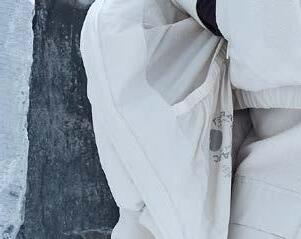
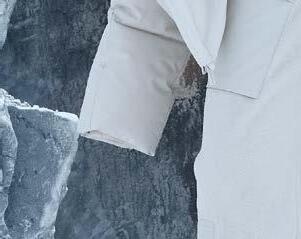
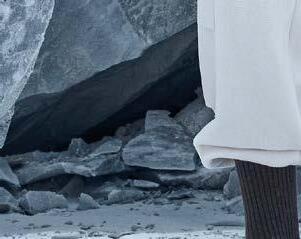





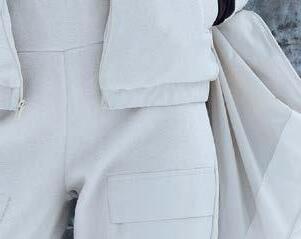
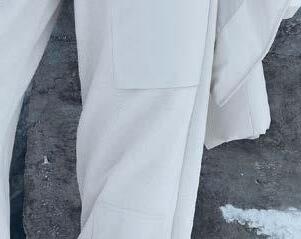
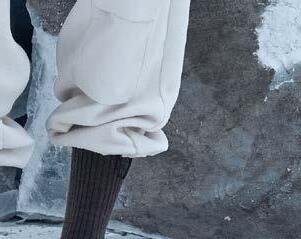














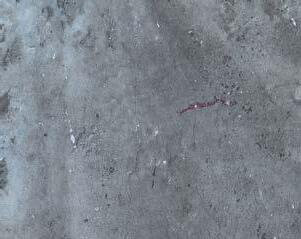




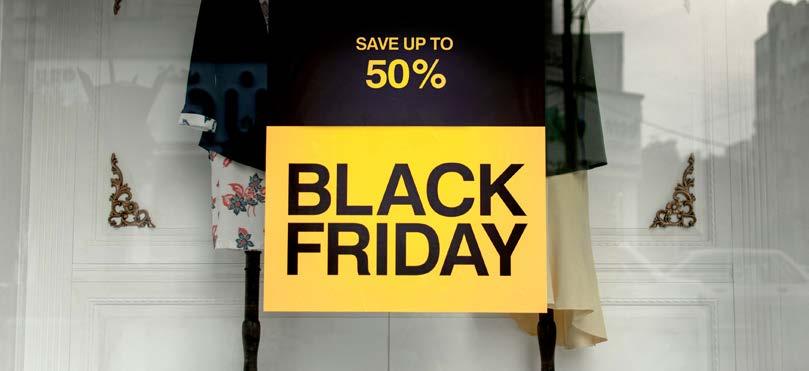
It’s no longer just a race for discounts: today, this event triggers complex expectations and behaviors. For brands, the challenge is to turn hype and cognitive biases into strategic levers, generating value beyond the 24 hours of the event
Most retailers still see Black Friday as a necessary evil: compressed margins, stressed logistics, customers who only shop during promotions. But this view captures only half the story. Today, the game has changed: consumers no longer wait just for discounts. Driven by FOMO (Fear Of Missing Out) and urgency bias, they plan their purchases weeks in advance, building wishlists, filling carts, and monitoring favorite brands as early as October. Reducing Black Friday to a price race erodes brand perception. The real challenge for companies is not offering steeper discounts, but designing experiences that attract new customers, encourage repeat purchases, and build loyalty.
Can you skip Black Friday?
Beware: skipping Black Friday is not a strategic choice. It could be a gift to competitors. Consumers have now integrated this event into their mental shopping calendar. When November arrives, they actively look for offers from the brands they follow. If you’re absent, you’re not just missing immediate sales—you’re giving your most loyal customers the chance to discover the competition. Those who ignore this time window risk losing relevance during the peak commercial moment. Developing a strategy aligned with the event calendar is no longer optional but a competitive necessity.
A tool for loyalty
Black Friday can be the most strategic moment of the year to build lasting relationships and reward loyal customers. Here’s how to transform it from a simple promotional event into a gateway to brand engagement.
Convert anticipation into sales. When purchases are driven by anticipation, hype is the spark. Building excitement means warming up your audience in the weeks leading up with exclusive lists, countdowns, and targeted campaigns. This is the same logic as Apple or Netflix launches: the anticipation of pleasure
ABOUT

becomes the pleasure itself. For companies, this translates into an editorial plan that guides the consumer, generating curiosity and progressive engagement. At launch, the audience perceives not a mere promotion but a participatory event. This approach works on two fronts: rewarding existing loyalty with early access, exclusive discounts, and preview products, while simultaneously lowering entry barriers for new customers to test products and discover the brand’s real value.
Sell without devaluing. The most insidious risk of Black Friday is eroding perceived value. To prevent this, shift focus: instead of cutting prices, add value exclusive gifts, curated bundles, premium services like extended returns or free personalization. Customers perceive concrete benefits without the brand appearing “discounted.” This strategy not only protects positioning but often generates higher margins than simple price reductions.
Segment Not all customers are equal, and Black Friday is the perfect time to show it. Segmentation is a key part of strategy: VIP clients deserve early access and exclusive perks, while new prospects need fluid, immediate brand discovery paths. The key is designing Black Friday as a springboard to Christmas, building post-event communications that naturally drive repeat purchases and turn the occasion into lasting relationships.
Why don’t customers always buy the deepest discount?
Consumers enter Black Friday expecting the lowest price on the perfect deal. Yet often purchases happen on less discounted products, driven not by savings but by the energy and urgency created by brand communications. How? Cognitive biases influence purchase decisions: perceived scarcity (“only a few left”), temporal urgency (“today only”), and social proof (“chosen by thousands of customers”). These mechanisms shorten reflection time and accelerate decisions. Brands that ethically leverage these levers can maximize conversions.
Ride On is a digital agency that combines strategy, marketing, and technology to support brands in the sports, lifestyle, and fashion sectors. It stands out for a collaborative, data-driven approach, working alongside brands as a strategic partner and integrating expertise in e-commerce, marketing automation, and digital product development. The agency’s mission is to drive brand growth through relevant communication strategies, strong user relationships, optimized conversion processes, and tailor-made digital solutions. As a certified Shopify and Klaviyo partner, Ride On blends creativity, technology, and data analysis to deliver concrete, measurable results, aiming to attract qualified traffic and foster sustainable long-term growth.

The luxury of outerwear is renewed through enveloping textures and sculptural cuts.
Alpaca, baby cashmere, merino wool, and silk intertwine in limited editions, creating a narrative of warmth, light, and materiality. Coats, jackets, capes, or overshirts wrap the masculine and feminine silhouette, interpreting winter trends with the timeless elegance by
Valeria Oneto and Sara Fumagallo
On its thirtieth anniversary, Avant
Toi rediscovers its origins and the brand’s DNA, crafting a narrative that unites past and future. Primordial rusticity and natural earth-inspired shades merge harmoniously, evoking authenticity. A deep connection with Mother Nature arises, a source of inspiration and renewal.
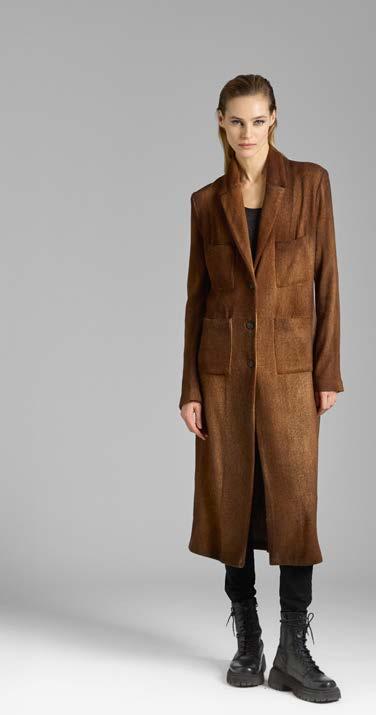
Impulso reinvents the urban jacket with a sustainable, high-tech approach. The model combines technical fabric with water-repellent knit sleeves, completed by a detachable hood for total versatility. Eco-friendly padding ensures warmth without environmental impact, embodying the brand’s green philosophy
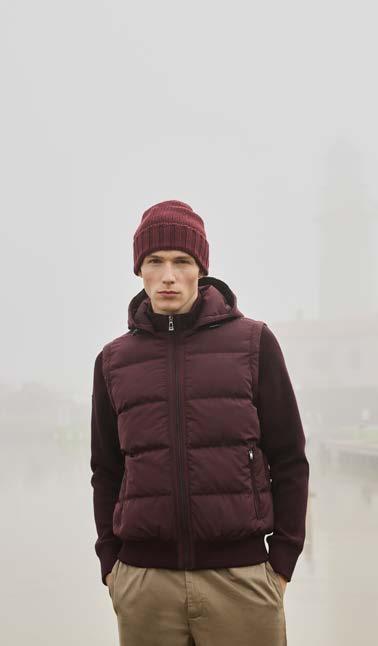

Montecore’s winter collection strikes a perfect balance between contemporary elegance, functionality, and sustainability. Outerwear combines natural and technical fabrics in refined palettes – grays, beiges, greens, and blues – to create clean, versatile lines, designed for urban life and intimate moments. Each piece offers comfort and durability.

Mauro Ottaviani presents a bomber blending luxury and uncompromising comfort. Made in camel teddy and cashmere, the piece envelops with softness and warmth, while cashmere trim defines discreet elegance. A perfect balance of artisanal tradition and contemporary design, created for the man seeking sophisticated style and everyday practicality. The collection confirms the brand’s vision: iconic and precious garments.
Annapurna’s Autumn-Winter 25/26 collection unites artisanal tradition with fine yarns. Inspired by the motifs of Northern nomadic peoples, each piece evokes a bond with nature through unique textures and colors recalling earth and sky. Cashmere and merino wool are expertly crafted to reinterpret ancient traditions in a modern key
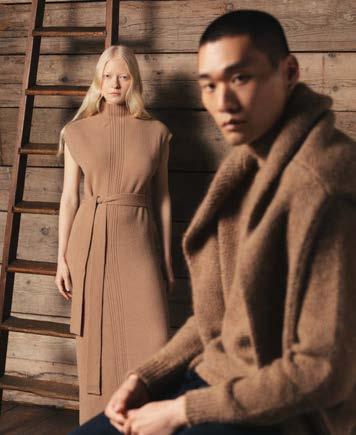
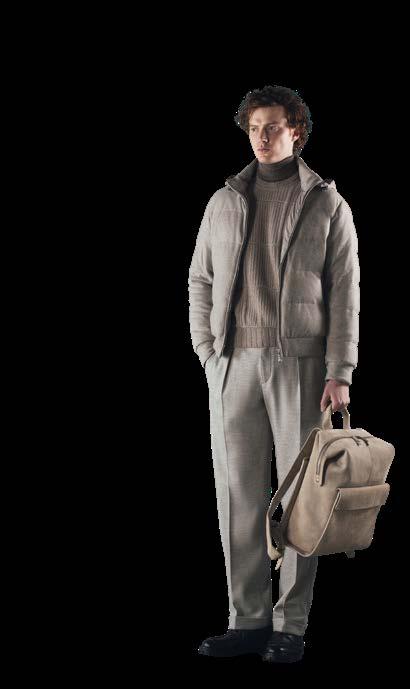
Cortigiani celebrates the art of menswear with the new FallWinter 25/26 collection, presented at Milan Fashion Week Uomo. A perfect balance between tailoring tradition and innovation, where wool and cashmere merge into versatile, impeccable pieces. Suits, jackets, and coats convey authentic elegance, blending comfort, functionality, and timeless style. A collection designed for the contemporary man: sophisticated, dynamic, and natural.
The Hubertus coat by Lodenfrey merges Alpine tradition with city style. Made in virgin wool and alpaca loden, it keeps the historic model’s features: back pleat, raglan shoulders, fluid fit. Suede collar and refined checked lining refresh the classic with sophisticated details. A timeless icon, ideal also for urban wear.
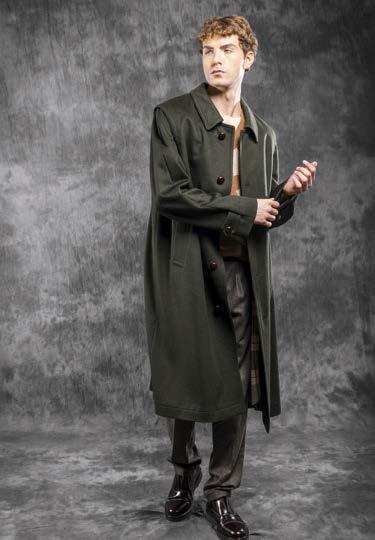
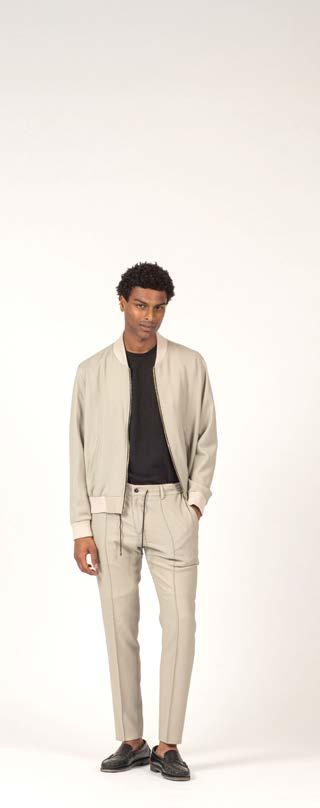
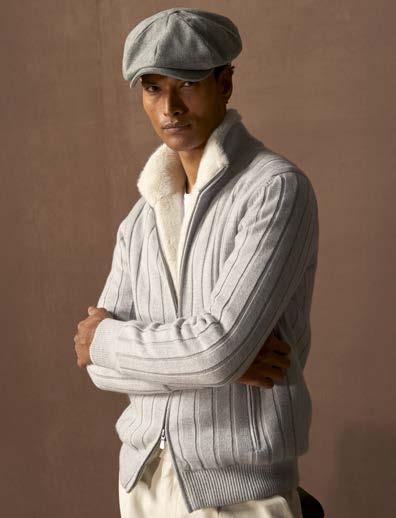
A new tactile, responsible luxury by Gran Sasso. The three-ply pure cashmere jacket reinterprets outerwear with a delicate ribbed knit that sculpts silhouettes and enhances structure. Metal zippers add refinement, while the eco-fur lining ensures warmth and softness with ethical awareness. An essential piece, rich in details, combining comfort and conscious craft.
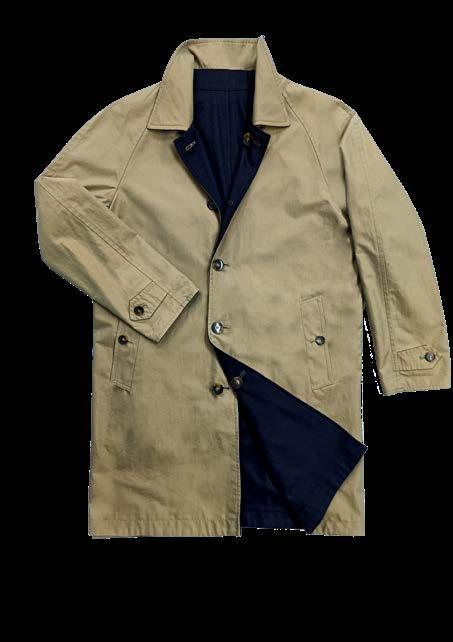
The new Dean by L’Impermeabile reimagines the city trench with a refined dual identity: iridescent Solaro fabric on one side, pure cashmere on the other. Tailoring tradition meets innovation in a play of texture and light conveying understated elegance. Fluid lines, precise details, and reversible design create a sober, authentic Italian product.
Giab’s is a historic symbol of Italian craftsmanship, uniting Tuscan artisanal heritage with a contemporary, innovative, international vision for over seventy years. In the third generation, under Lorenzo and Cosimo Ballerini and Isabella Guasti, the brand focuses on manufacturing quality, style research, and technological innovation.

The winter collection by Brunello Cucinelli highlights lightness in every category, especially outerwear in weightless nylon and fine pure cashmere. Coats feature refined details, padded satin, and sporty reinterpretations. Soft leathers and plush shearling complete the line, combining comfort, quality, and sophistication.
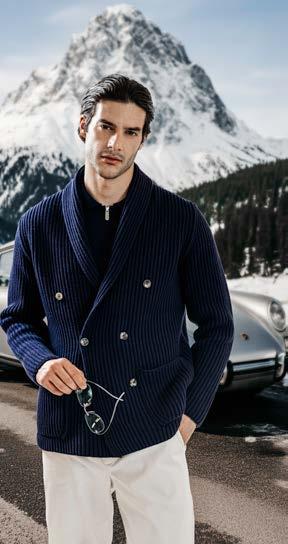
At first glance a jacket, but to the touch a revelation: SVEVO redefines the double-breasted coat in Baby Merino 160’s knit, among the finest wools worldwide. Lightweight, breathable, and incredibly soft, it is made on historic Bentley and Rene Bordier looms, guardians of unique savoir-faire. The result is a fluid, sophisticated knit-jacket, a symbol of gentle new power.

The AI 25 collection by Sebago celebrates timeless style and craftsmanship, extending the DNA of the iconic penny loafer to apparel. From preppy to utility wear, four worlds offer pieces for contemporary total looks and creative layering. Tradition and experimentation coexist in unisex designs, combining elegance, comfort, and modern details.

MCS launches MCS 1987, a capsule celebrating the brand’s origins and looking to the future. Honoring the founding year, 1987, the collection emphasizes sustainability, innovation, and Made in Italy. It reinterprets American workwear heritage with functionality and contemporary elegance. Produced in collaboration with Maeba International, Italian excellence in circular textile innovation.
After / Label turns winter into a sensory experience through material, color, and volume. About ninety unisex outerwear pieces merge functionality with unconventional style, playing with innovative volumes and color contrasts. Italian wools, velvets, flannels, and printed nylons define the brand’s identity, blending artisanal tradition and contemporary boldness.
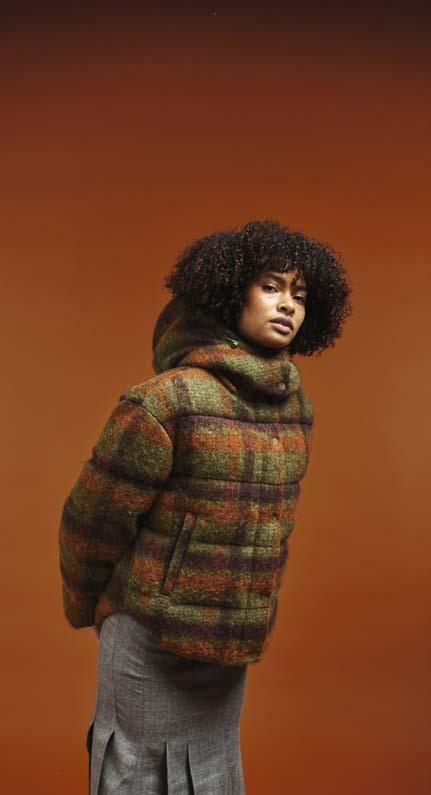
The FW 25/26 collection by Pomandère reinterprets 1950s London, merging tradition and modernity. Fine fabrics such as tartan flannels, gabardine, and velvets combine with contemporary tailoring details. Warm, contrasting hues, wool and cashmere knitwear, and artisanal finishes define an elegant and bold style.
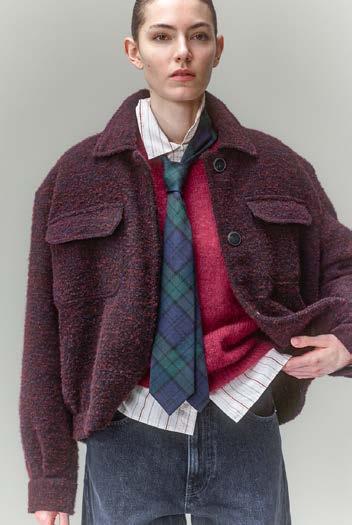

The classic by Outhere transforms technical functionality into urban style. Featuring 10K waterproof and breathable fabric and genuine down padding, it guarantees protection, comfort, and lightness. Waterproof vertical zippers and internal straps, distinctive brand details, reflect Outhere’s design DNA. A piece that evolves over time without ever losing its original identity.

The FW 25/26 collection by Sease combines urban design with sustainability and functionality, with pieces designed for contemporary, high-performance style. Key pieces include the Feather Reversible Vest, made in 100% recycled down and cashmere drape, with shoulders and details in water-repellent technical fabric. The reversible design provides two distinct looks without compromising protection or comfort
Manteco x Fortela present a new cashmere plaid shirt in limited edition, a symbol of timeless elegance and Italian craftsmanship. This piece is born from the collaboration of the two companies, merging Manteco’s textile tradition and Fortela’s distinctive style.
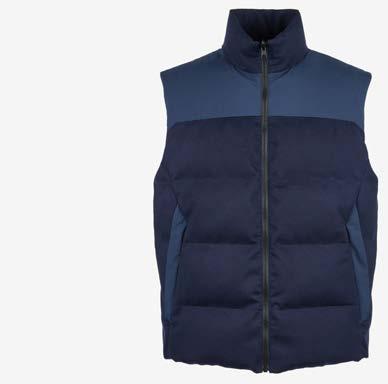
Boglioli interprets contemporary elegance for the cold season with garments blending refinement and comfort. Cashmere-blend jackets unite

The “In Alto Mare” collection by art259design FW 25/26 explores water, transforming volumes and textures into functional and poetic garments. Inspired by fishing, it features fluid silhouettes, organic layering, and minimal yet sensory details. A romantic, sustainable approach to workwear with zero waste.


The FW 25/26 outerwear collection by Trussardi ex presses “quiet confidence” through pure lines, fine fibers, technical fabrics, and essential details. The pal ette of neutral and earthy tones reflects the balance be tween contemporary design and the brand’s identity.

For Winter 2025, forte_forte presents the “la lune en fleur” line, with jacquard fabrics handwoven in silver and cotton threads. Each creation comes from artisanal gestures evoking elegance and timeless poetry. Coats and jackets
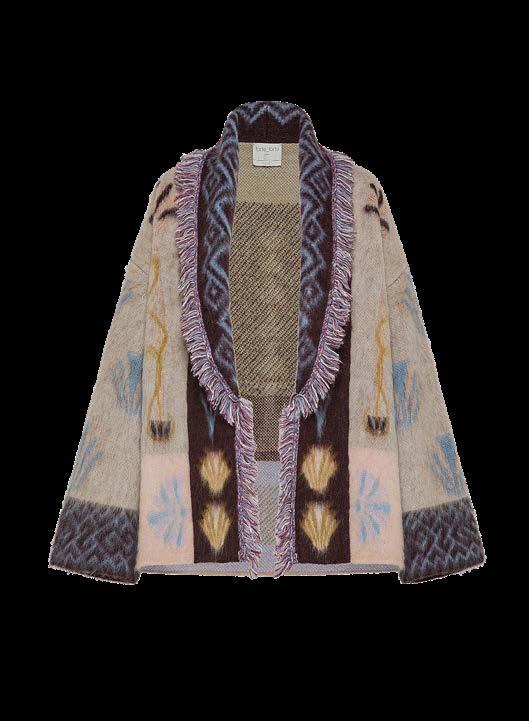
Paul & Shark unites style and performance in a collection highlighting elegance and functionality. The centerpiece is a reversible cashmere windbreaker with Typhoon treatment, waterproof and windproof. A garment that combines refinement, comfort, and durability, representing the brand’s new direction.
Canada Goose continues to redefine outerwear by combining functionality and design, Canadian roots, and contemporary vision. Designed for city living with an adventurous spirit, it suits those unafraid to push beyond usual boundaries.

The Capitolo 02 collection by Retori celebrates identity in transformation, inspired by artist Miko Veldkamp and his multicultural visual language. Fluid and structured garments, cultural details, and premium materials express the multiplicity and complexity of human experience.
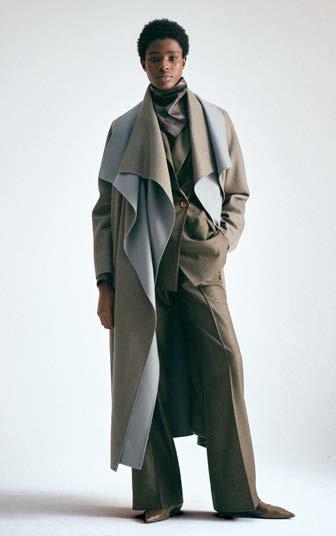
The FW 25 collection by Kangra, under the concept “Italian Manifesto,” celebrates authentic, essential, and timeless style, rich in refinement and attention to detail. The oversized full-zip cape in wool and cashmere, with cable-knit patterning, soft waterproof lining, and practical pockets, merges elegance and functionality.


The winter collection by 1972Desa unites the elegance of luxury leather goods with contemporary tailoring. Premium leathers, noble yarns, artisanal finishes, and sophisticated shades dominate. The result is a minimal, refined, and distinctive style that enhances iconic garments and accessories.
ZONA20 MILANO’s Timeless Tales FW 25 collection is inspired by Gabriel García Márquez’s One Hundred Years of Solitude. A journey between tradition and innovation, where each piece tells stories of craftsmanship, sustainability, and neutral design. Divided into four evocative themes, the collection blends classic and contemporary elements.

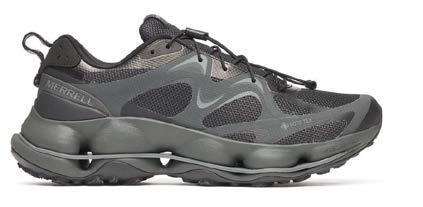
The FW 25/26 collection by K-Way celebrates the brand’s 60th anniversary, reinterpreting the iconic windbreaker with a contemporary urban, sometimes gender-fluid style. Technical materials such as waterproof nylon and thermal padding dominate, with versatile layering, parkas, trenches, and long coats combining function and comfort.


The Tobias Jacket LAB by RefrigiWear combines urban style with technical performance, featuring iridescent nylon, Sorona insulation, and workwear details. Lightweight, breathable, and protective, it is an innovative over-cropped piece with metropolitan character
The SpeedARC Matis by Merrell is a fast trekking sneaker designed to combine athletic performance, exceptional comfort, and urban versatility. Created to accompany wearers from city streets to trails with stability, cushioning, and lightness.
Capitolo 7 by GIO Giovanni Gerosa is a manifesto of identity and transformation, where each piece tells intimate and collective stories through fabrics, shapes, and textual prints. The collection combines bold and fluid cuts, natural and glossy materials, and textual motifs as narrative tools.
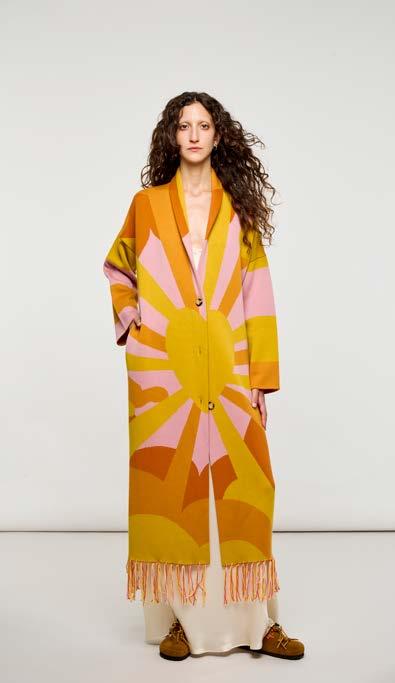
The FW 25 collection by Barbour, “Ode to Ayrshire,” celebrates the brand’s Scottish roots through exclusive Ayrshire tartan. Checked motifs adorn jackets, coats, and accessories, reinterpreted in a contemporary key without losing heritage authenticity.


Malo elevates cashmere to a daily gesture, transforming dressing into a ritual of elegance and comfort. The unisex double-faced cashmere coat, with hand-stitched seams and refined finishes, is soft, warm, and lightweight. A timeless piece that blends essential style, durability, and enveloping comfort, perfect for all seasons.
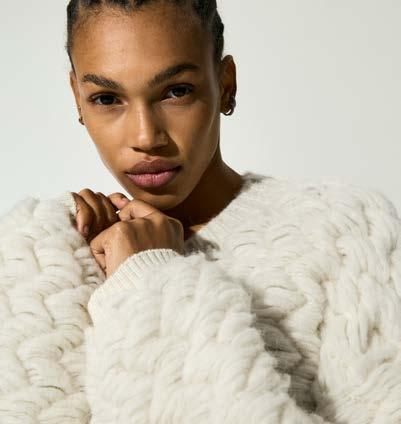
Scaglione’s winter collection celebrates Italian artisanal elegance through fine yarns and refined workmanship. Chunky alpaca knits become perfect mid-season outerwear: soft, warm, and designed for natural layering, adding comfort and character to any look.
The FW 25 collection by J.SALINAS celebrates Peruvian craftsmanship and Mochica culture, inspired by the treasure of “El Señor de Sipán.” Handmade in alpaca and cotton, the pieces combine tradition, warmth, and precious details, evoking opulence and history.
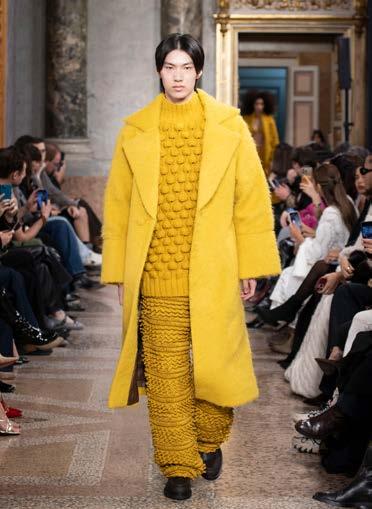
The FW 25/26 collection by Jeanne Baret features a long parka combining waterproofing, thermal insulation, and comfort with functional details like a hood, double-slider zippers, and pockets. Wearing it ensures a perfect balance of functionality, style, and femininity even on the coldest days.


Born from stardust, the new sneaker by Satorisan fuses heritage and sustainable innovation in a timeless design. Made with premium materials and a conscious soul, it celebrates the deep connection between humans and the universe. More than a shoe: a symbol of connection.
by Marco Rizzi
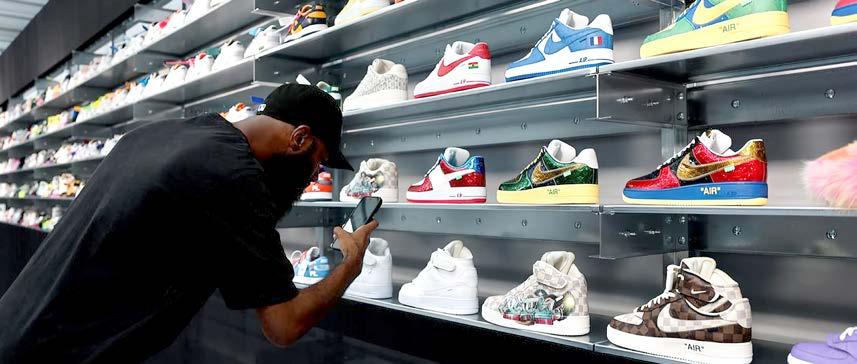
It has already been almost four years since the premature passing of Virgil Abloh, the versatile artist from the Chicago area who first appeared on the scene as Kanye West’s shadow and eventually reached the most coveted seat: artistic director of Louis Vuitton’s men’s line. Abloh’s path is highly unique, sometimes inscrutable, demonstrating that patience and perseverance are essential when all the elements are not clear from the start. Otherwise, it would be difficult to explain how an architect with a passion for music, fashion, and design became one of the most recognizable faces and one of the most polarizing figures in contemporary fashion, a symbol of the crossover between fashion and subcultures that has marked the past fifteen years. Virgil Abloh’s work was recently the focus of “The Codes,” an exhibition curated by Chloe and Mahfuz Sultan, held from September 30 to October 9 at the Grand Palais in Paris. This major retrospective, organized with contributions from Nike and Virgil Abloh Archives, presents Abloh and his influence through his work. The Virgil Abloh Archive is a new entity created to preserve the designer’s legacy: over twenty thousand items including products, prototypes, studies, original works, sketches, digital media, and objects from Abloh’s private collection. The first glimpse inside this highly organized, top-secret vault came via a photo shoot published in the
September issue of the US edition of GQ, released just weeks before the announcement of “The Codes,” which later opened on what would have been Abloh’s forty-fifth birthday. Fans were certainly not disappointed: the exhibition was crowded throughout its run and offered a unique opportunity to see Abloh’s objects and creations up close. Many sneakers, of course: personal pairs, prototypes made with Nike and Louis Vuitton, and versions never released in stores. But also records, musical instruments, jewelry, books, bags and accessories, clothing, and merch created since his earliest experiences with RSVP Gallery, Been Trill, and Pyrex. What “The Codes” showed is that Virgil Abloh’s legacy goes far beyond the sheer volume of products signed throughout his career and is not limited to the enormous aesthetic and, in some ways, philosophical influence he had on his contemporaries, and even more obviously, on the next generation of creatives and designers. The exhibition is an enthusiastic, non-nostalgic account of a way of being creative that risks being lost over time, somewhat akin to the art of sampling in Hip-Hop music: true virtuosity lies not in being visionary for its own sake, but in the awareness of being a piece of a larger context, where it is essential to know one’s past and roots in order to “borrow” shards and fragments, reorganize them, and create the foundation for what is to come.


Highsnobiety, one of Germany’s leading media houses in fashion and streetwear, has decided to close its e-commerce platform by the end of 2025. The online store, launched in 2019 to offer exclusive capsule collections and products created with consulting clients, gradually expanded into a full store offering a curated selection of sneakers, apparel, and accessories. From now on, Highsnobiety will focus on its core activities: publishing, content creation, media, and consultancy for brands in the industry.
New Balance has completed the renovation of its Oxford Street store, located in central London. While the performance section was introduced last spring during the London Marathon, large areas of the new store are dedicated to the lifestyle line, with special attention to the historic Made in UK collection, produced at the Flimby factory in Cumbria since the early 1980s. The launch of this store comes amid renewed interest in mono-brand and flagship locations, offering fans an alternative to the most famous sneaker shops.


As part of a wider series of leadership changes, Converse has appointed Chavon Webster as its new Vice President of Global Footwear and Design. Webster joins the American brand after nearly eight years at New Balance and just over three at Nike, leading children’s lifestyle footwear and later serving as senior director for women’s sport and training shoes. The appointment comes amid a larger restructuring of key roles across Nike-affiliated companies by Elliot Hill, the Swoosh CEO, who took the brand’s helm during a crisis, bringing a “sportfirst” vision many felt had been neglected around the pandemic years.

A few weeks after unveiling its new collection and opening a New York store in Lower Manhattan, KITH inaugurated its first Chicago store at 54 East Walton Street, in the heart of the “Magnificent Mile,” the city’s most exclusive shopping area. The Chicago store was designed as a luxury boutique, with a marble façade and spacious interiors displaying the full catalog. Founder Ronnie Fieg created a special commemorative collection with Asics for the opening, welcoming enthusiasts interested in his latest designs from day one.
Following Dick’s Sporting Goods’ completed acquisition, Foot Locker announced the appointment of Ann Freeman, formerly Ann Hebert, as North America president. In addition to her recent role on the Allbirds board, Freeman spent 25 years at Nike, reaching general manager and vice president for U.S. operations. Freeman had made headlines in 2021 when she left Nike amid a scandal involving her son Joe, accused of using her resources and preferential channels to buy merchandise for resale on the secondary market.

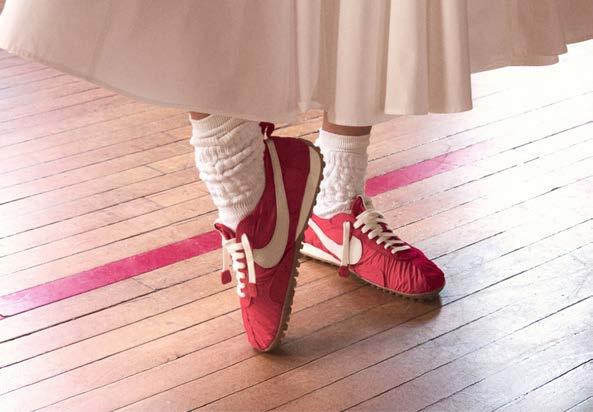
After drawing from the eclectic catalog of the considered line for the first two chapters of this partnership, Jacquemus explored Nike archives to choose the new model starring in this latest release. It is a simplified version of the Moon Shoe, one of the earliest models of the Swoosh. Bill Bowerman, cofounder of the brand and coach of the University of Oregon track team, used to make prototypes by hand for his athletes to test the new technologies he was developing. The Moon Shoe is one of these early models, reimagined by Jacquemus in three colorways with a nylon base: white exclusive to the French brand stores, while red and black received a wider distribution.
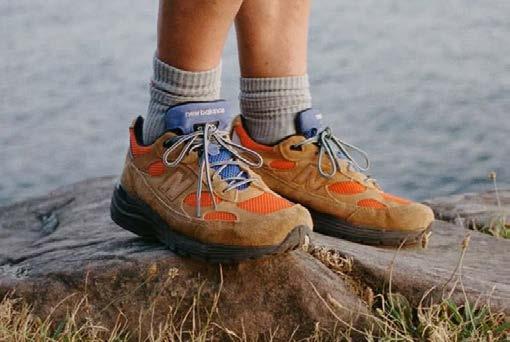
Clarks Originals keeps impressing. The lifestyle department of the historic British brand, celebrating two centuries of activity this year, is reaping the rewards of work done in recent seasons. The company managed to reposition itself, reaching new audience segments among young people and streetwear fans without losing its identity or forgetting its roots and loyal customers. This happens not only through major collaborations but also via local micro-partnerships, supporting small communities with engaged audiences. Latest on the list is Dukes Cupboard, a renowned London vintage store in the heart of Soho, which recently opened in Amsterdam. Both locations hosted special events presenting an extremely limited edition of the Wallabee Low, created by Clarks together with the store staff
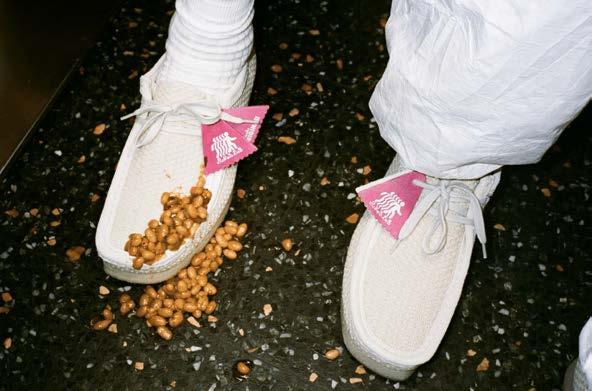
Rapper, painter, athlete, chef, model. The list of roles held by Action Bronson could go on forever. In recent years, the New York artist seems unstoppable, and one of his main areas of focus has been sneakers. After becoming one of New Balance’s faces for the official launch of the 990v6 AB, he started a full partnership with the US brand, signing multiple collaborative collections spanning lifestyle, running, and fitness. His latest release is the 992 “Tiger Eye,” first shown last spring and released just weeks ago, first online via the artist’s site and then in select sneaker stores worldwide. A second colorway now seems imminent, the “Digitalis Purpurea.” Could he be saving it for ComplexCon in Los Angeles?
After more than thirty years of a distinguished career, Steven Smith is undoubtedly one of the most respected and admired footwear designers. Over decades, his work with New Balance, Nike, Adidas, Reebok, and Fila has transformed how sports shoes are conceived, designed, and produced, contributing immensely to the evolution of the industry. After leaving the footwear department at Yeezy, many wondered if Smith would take a new challenge or enjoy a well-earned retirement, when he instead chose his social channels to announce his move to Crocs as “Head of Creative Innovation.” Images of this new model, reminiscent of his work for Kanye West, have appeared online in recent weeks. The name and release date remain unknown, but it is confirmed as Steven Smith’s latest creation.

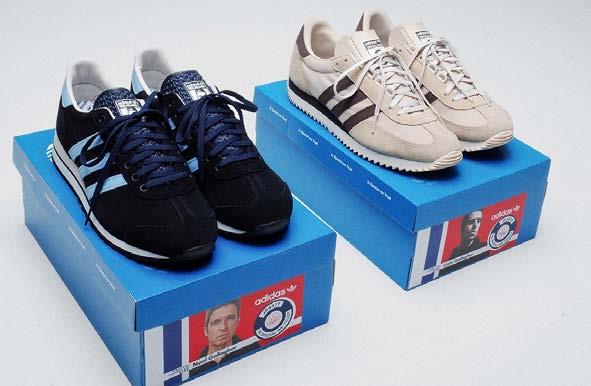
Spezial is the vintage-inspired line curated by Gary Aspden for Adidas, a dream for fans who for over a decade have been able to revisit gems and rarities from the German brand’s archives, reproduced with meticulous care and attention to detail. Among these fans are the Gallagher brothers, previously featured in Spezial collections. The duo, busy this year with the massive Oasis reunion tour, asked Aspden to create a series of special products to celebrate the event: not only merch for the concerts and staff apparel, but also two new models, the “Marathon” for Noel and the “Achille” for Liam, each produced in two variants for the global market and exclusive to Japan.
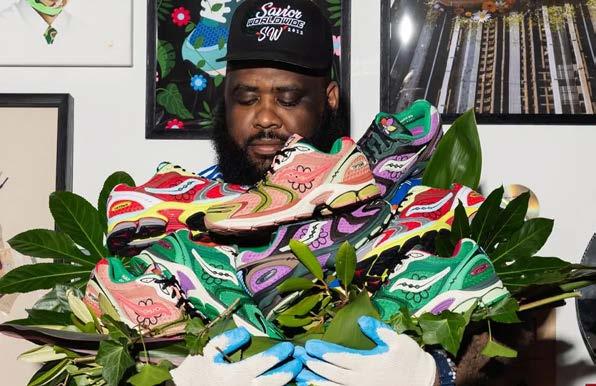
Jae Tips is no longer a newcomer to the sneaker world. In just over three years, the Bronx-born rapper has become one of the most important names among Saucony’s partners and collaborators, as well as one of the most recognizable faces in the scene. From 2023 to today, Jae and the American brand have released more than ten successful collaborative sneakers, now joined by the four ProGrid Triumph 4s in the “The Flowers Grow Uptown” pack, a highly anticipated floralthemed collection. Three of the four colorways were presented through two popups organized by Saucony in London and New York City, then released in stores, while the fourth, the “Poison Ivy,” is reserved for a later drop in the coming months.
The Asics GEL-Nimbus 10.1, a lifestyle model combining elements from various 2000s running silhouettes in the Japanese brand’s catalog, is quickly emerging as one of the key silhouettes the brand is focusing on. Not only have several in-line colorways sold well, but high-profile collaborations also stand out. Recently, 18 East, a New York label known for handcrafted reworks of technical outdoor pieces, joined the list of partners creating special 10.1 editions. For their version, they selected leather, hemp, natural fabrics, and transparent inserts. The model was presented during the latest New York Fashion Week, though details on a global release are not yet available.


Salomon and FootPatrol, the renowned London sneaker boutique, joined forces to create an exclusive XT-4 OG, a true trail-running classic. The FP team focused on shades rather than colors, sticking to black and white but adding texture gradients to define the inner and outer sides of the shoe. This detail, paired with dual branding, pays tribute to the store’s two locations: London and Paris. The color contrast also reflects the story of a now-iconic model, born for outdoor use but adopted as an urban classic.
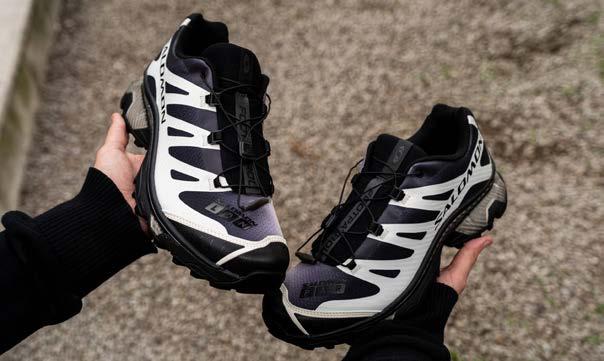
Haven, the Vancouver-based Canadian store, recently unveiled its latest collaboration, created in partnership with Hoka’s special projects team. The model is a Stinson Evo OG, a classic archive design brought back in recent seasons, interpreted in Haven’s signature clean gray colorway. The standout feature is that this Stinson Evo OG is the first waterproof version, using a breathable Gore-Tex membrane. A first drop took place at the Canadian store on October 17, followed by a second launch at a pop-up in Los Angeles the following week.

The third chapter of the partnership between Dime, the Montreal-based skate brand, and Merrell 1TRL, the US brand’s lifestyle line. The model chosen is the Cham Redux, a modular outdoor shoe and one of the 1TRL collection’s bestsellers. Two colorways were created, inspired by chameleon shades: one fades from off-white to black, the other is brighter, from pink to orange, keeping black for the sole and supports. So far, sales have been limited to Merrell and Dime’s e-commerce platforms, both in-store and online.
In a phase of change for retail, some have looked to the Japanese model
di Marco Rizzi

It is undeniable that retail is going through a moment of great difficulty in several areas. The sportswear and streetwear segment is no exception, having suffered the most after over a decade of peak, mass appeal, and instant sellouts that now make the contrast with the past even more evident. First came the pandemic, then a drastic shift in consumer habits and a general decline of interest in products, putting retailers under heavy strain. In recent years, several businesses decided to cease operations, and even big names closed their doors, surprising those who thought the crisis could spare the top players. In 2023, Hanon shut down after 30 years, while this year Bodega in the United States and Sneakersnstuff in Europe faced major threats and survived only by drastically scaling back their market presence. A worrying sign that no one was immune to the market’s challenges. Italy is certainly not untouched: in Trento, Kosmos closed after more than three decades; in Milan, Spectrum left its Via De Amicis store while keeping its historic Via Casati location; in Rome, Suede announced its departure before the summer holidays, and One Block Down left the capital for good. Even in this period of clear crisis, some have not given up on pursuing retail projects, exploring alternative solutions and models. One example is Stefano Paolini: the co-founder of Big Soup, one of Italy’s first resell stores, has recently opened MinimAAArket in Rome, a new venture inspired by the Japanese thrift store tradition and carrying forward the legacy of local initiatives like 40°. In cities like Tokyo and Osaka, independent shops offering selected fashion and streetwear, both new and pre-owned, have been part of the retail landscape for decades. Stores such as Rinkan, Komheyo, and Ragtag are established na-
mes, famous worldwide for eclectic catalogs ranging from the latest releases by brands like Supreme to luxury leather goods, Chrome Hearts jewelry, and unique pieces by Yohji Yamamoto and Rick Owens. With MinimAAArket, Paolini and his partner Jun De Sanctis aimed to replicate these stores, starting from their personal archive built over years of collecting and gradually adding rare items and new pieces sourced during trips to the Land of the Rising Sun. Naturally, it is challenging not only to cope with the current situation but also to offer a retail model unfamiliar to Italian audiences. Paolini has embraced this challenge, documenting MinimAAArket’s development on social media to bridge the gap with customers, sharing insights on Rome’s current scene, and expressing his view on often overlooked but delicate topics, such as how stores source stock and the crucial role of the public, which sometimes ignores experiments and shows little interest in novelties.
